“One cannot think well, love well, sleep well if one has not dined well.” Virgina Woolf, English writer

Part 3 – Japan
Nakasendō Trail & The Ryokan
It simply took a Shinkansen and an Express train to reach the Kiso Valley, in central Japan, to the area famously known as the Japanese Alps. Enormous snow-covered peaks rise up to form a beautiful background. Cherry blossoms are gloriously blooming everywhere in Japan.

Traveling on our own, what we anticipated to be a challenge, especially after the chaotic Tokyo Station, became almost second nature – get off one train, head over to the transfer gate, and find our next track; just like clockwork. The Nagoya train station, our transfer station, seemed like a local bus stop compared to Tokyo. We’re building our confidence in the transportation system, finding our foot if you will.
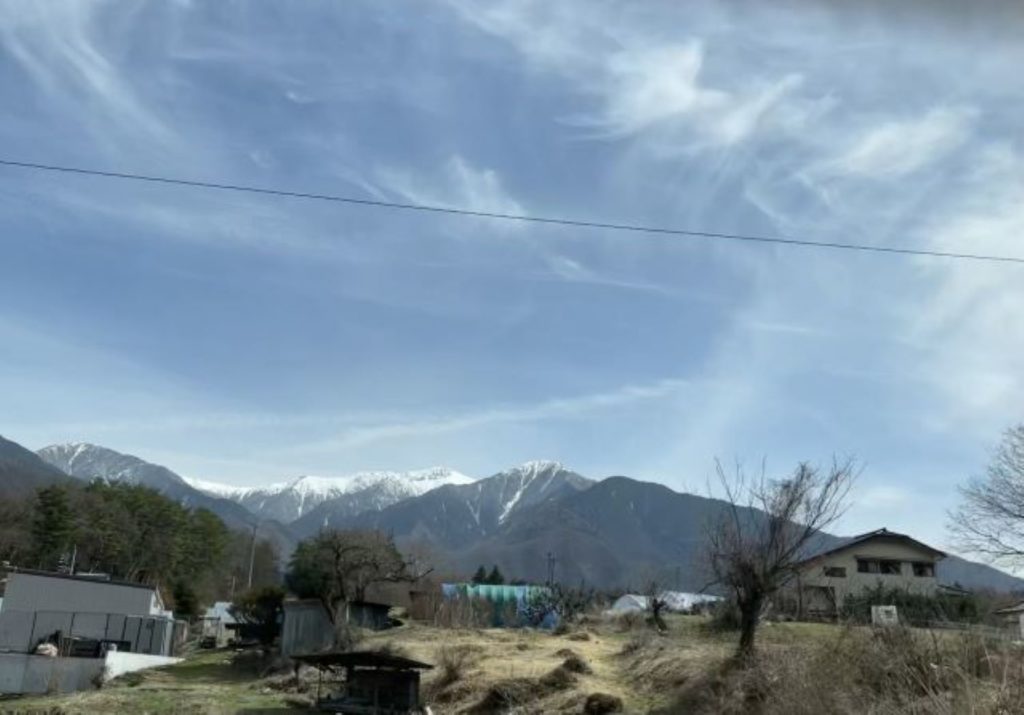
It’s time to immerse ourselves in historic Japan; beginning in Kiso-Fukushima, a charming small town nestled in a small, narrow canyon cut through by the fast-moving Kiso River (one of over 20,000 rivers that crisscross this island!). Its main attractions are the many hiking trails, access to ski country, and natural beauty. Throw in some clean, crisp mountain air of the nearby Kiso Mountains, part of the Central Japanese Alps, and you’ve got a pristine picture of rural Japan, starkly different from the coastal, industrial cities.
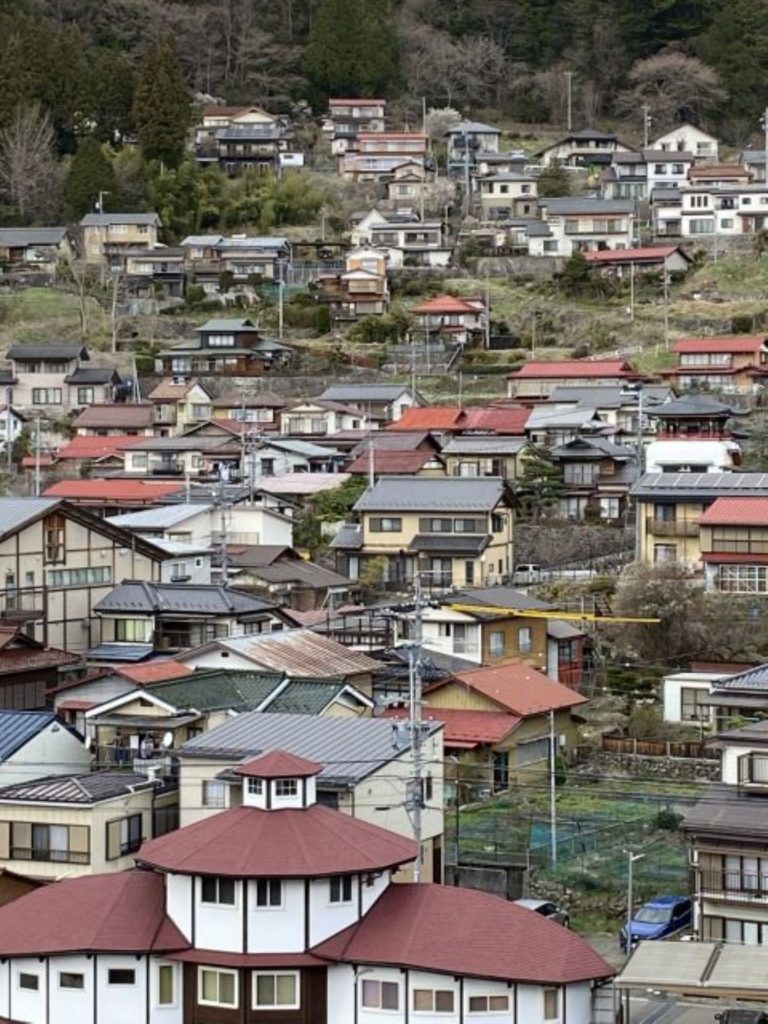
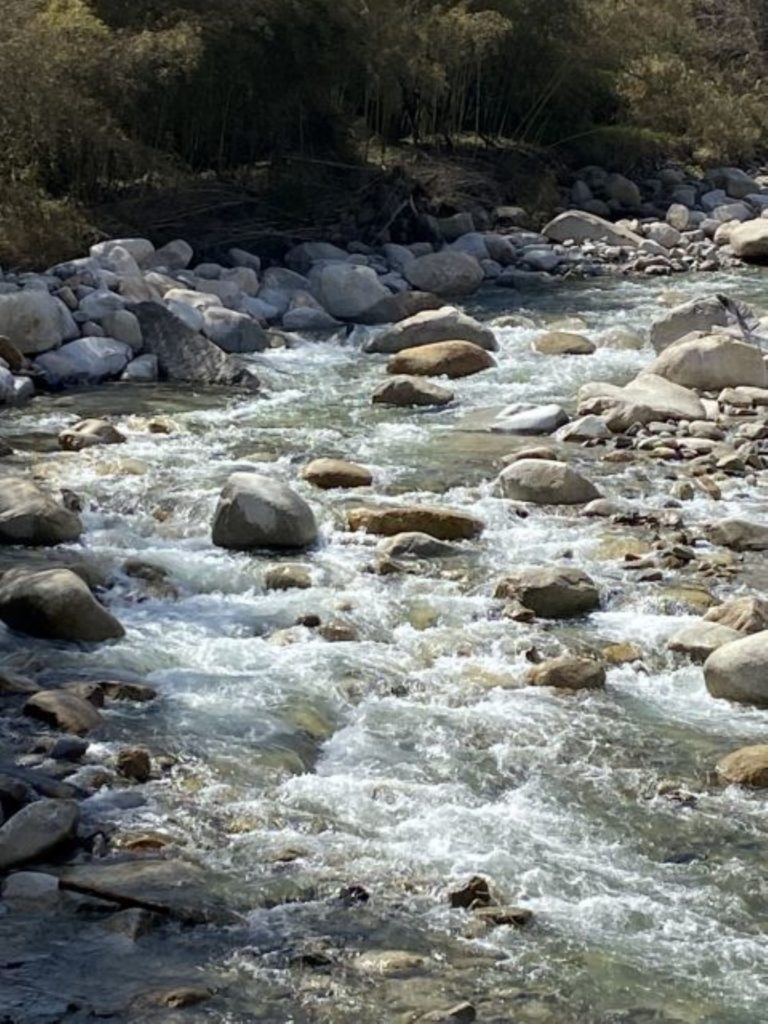
We’ll hike along the famous Nakasendō Trail, a historic highway of the Edo period, connecting Edo (modern-day Tokyo) to Kyoto, about 332 miles. The road was the major thoroughfare for the two centers of commerce.

Although there has been much modern development along the Nakasendō, a few stretches remain in its original, preserved form. The most well-known part of the trail lies in the Kiso Valley, an 8-kilometer section (5 miles) between the tiny post towns of Tsumago and Magome, part of which we walked.
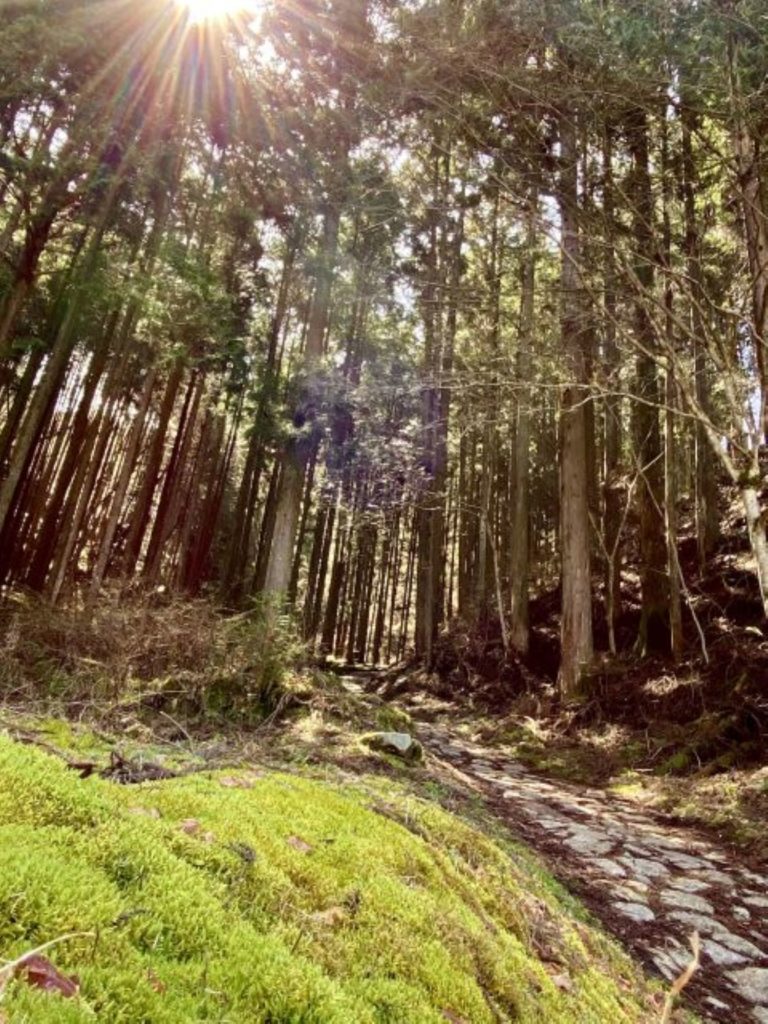
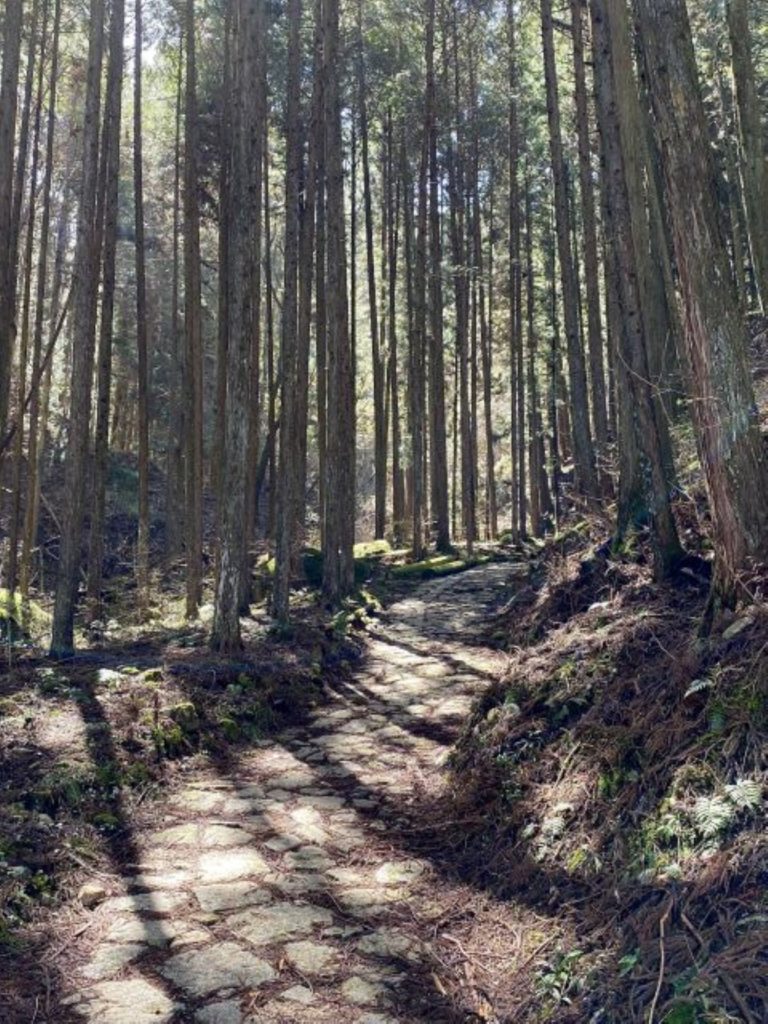
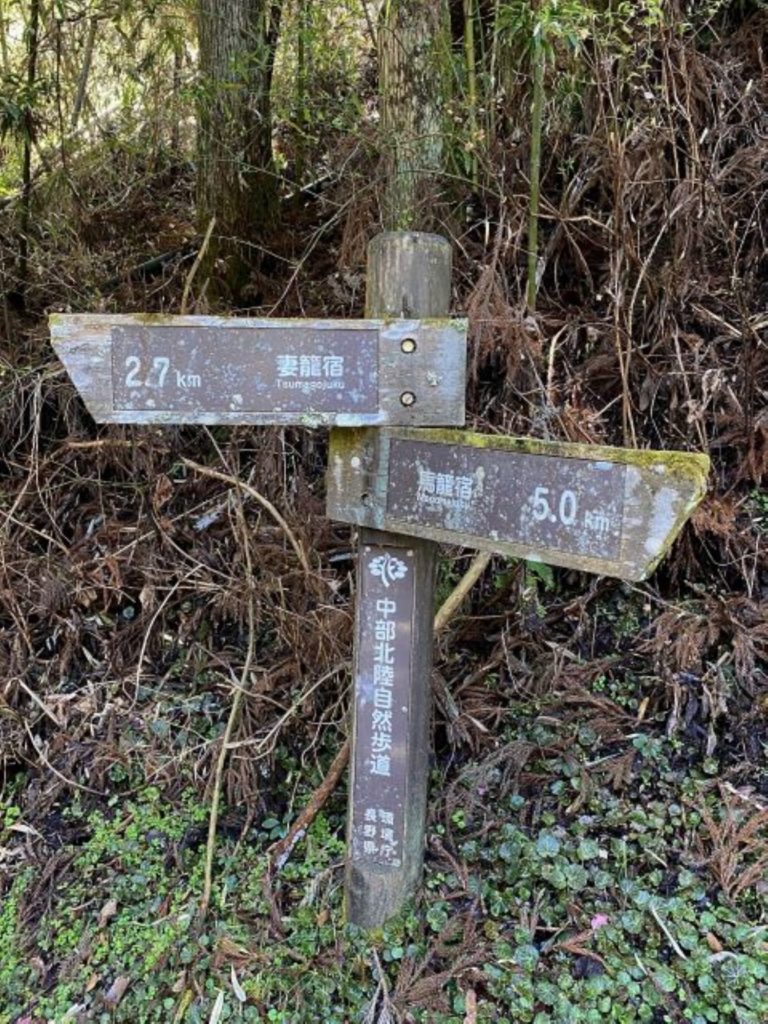
Today, Tsumago and Magome are popular destinations for its beautifully preserved, detailed buildings, streets, and restored architecture. They offer visitors a glimpse into Japan’s rich, cultural heritage. The towns have strict rules on building preservation and prohibit modernization, helping to maintain its historic charm and character.
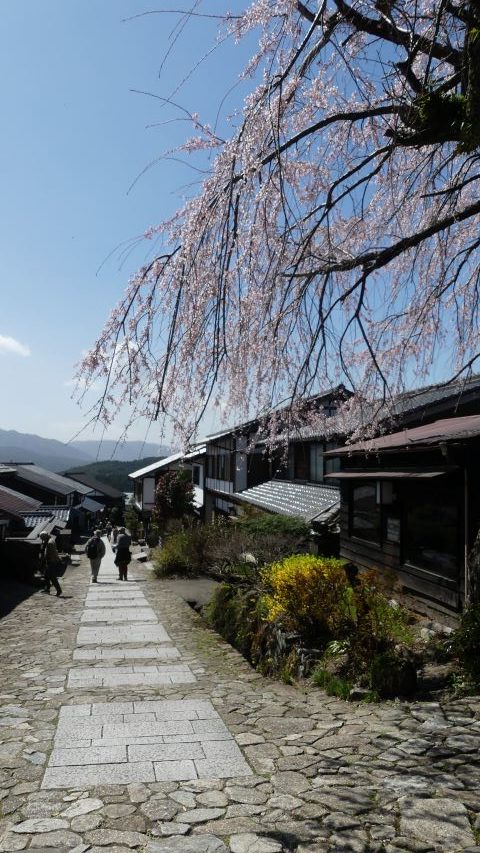

The trail typically takes around 2-3 hours to walk. Along the way, you’ll pass through forests, villages, rice paddies, and beautiful waterfalls. You’ll also encounter various historical landmarks such as shrines, temples, and old post stations. For David, the thinner mountain air was challenging, but he stuck with it for a good hour and a half along the picturesque path through the forest.
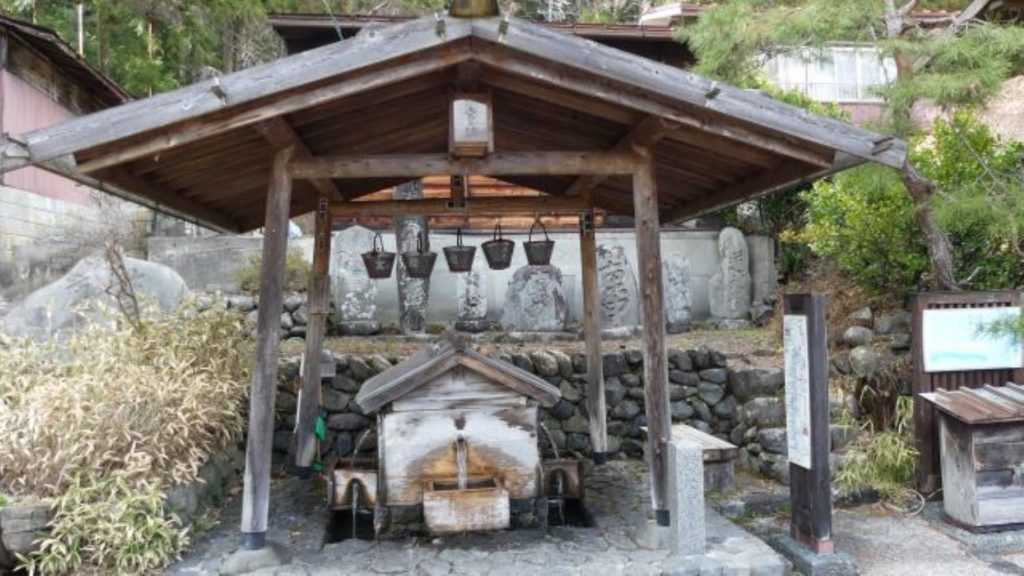
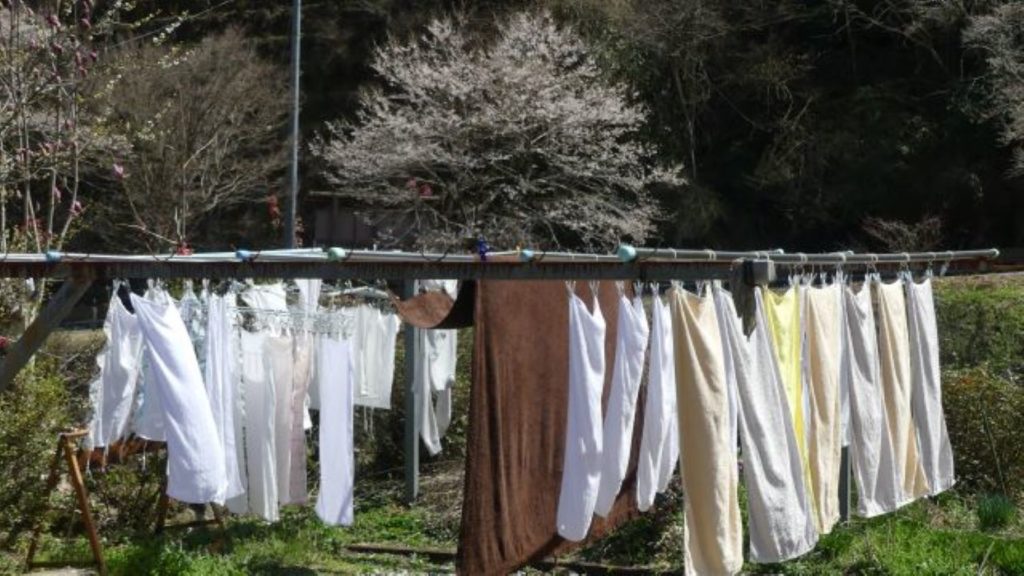
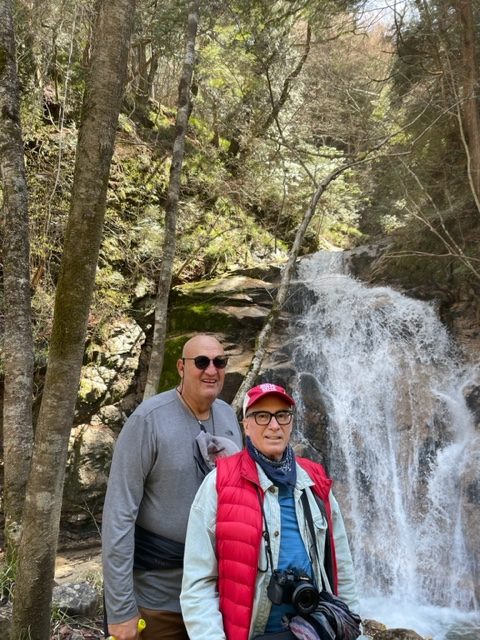
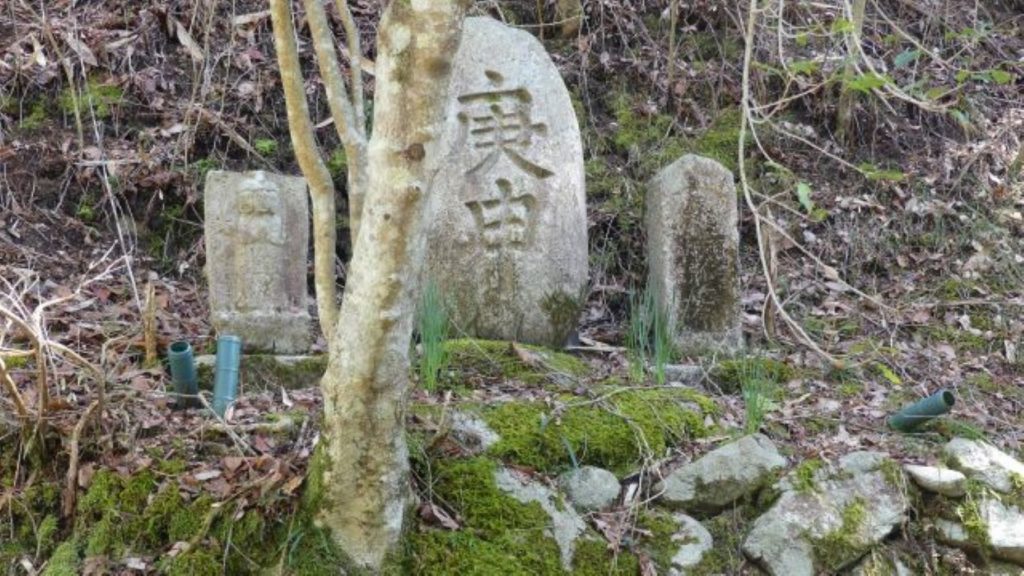
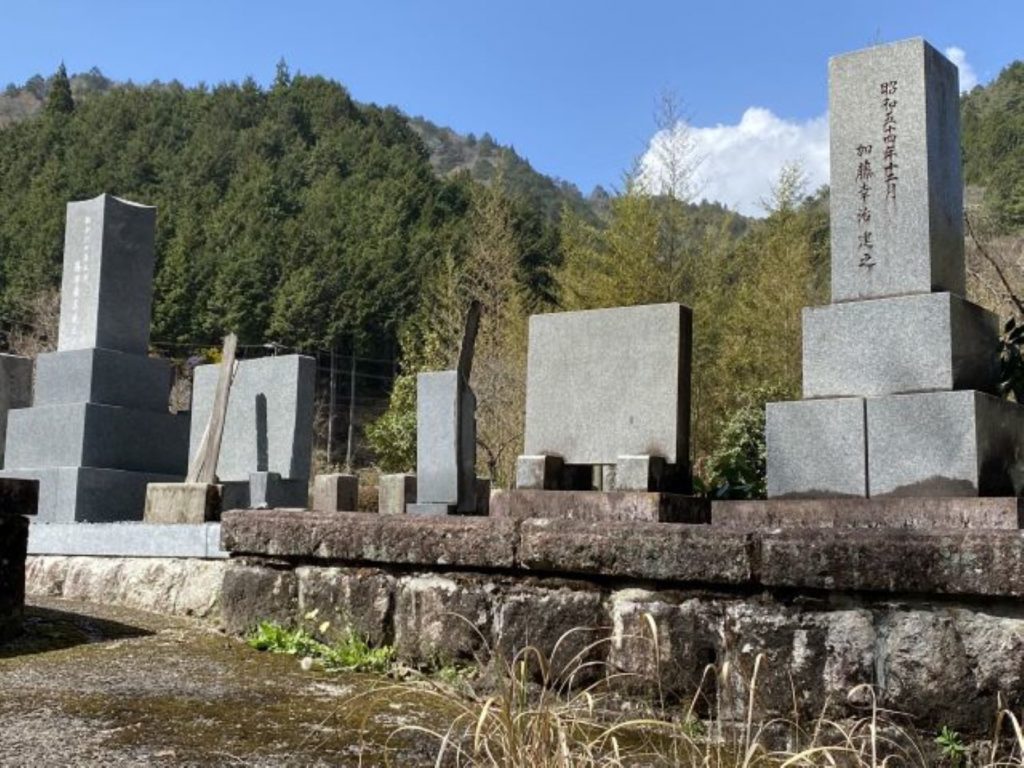
Bear bells … along the trail there are bells to ring, as tradition dictates, to scare off any wild bears that may be in the vicinity. I wasn’t worried, but David rang the bell with fervor; after all, he’s so tender and sweet, and I’m mean and tough … if you were the bear, which one would you choose to dine on?!
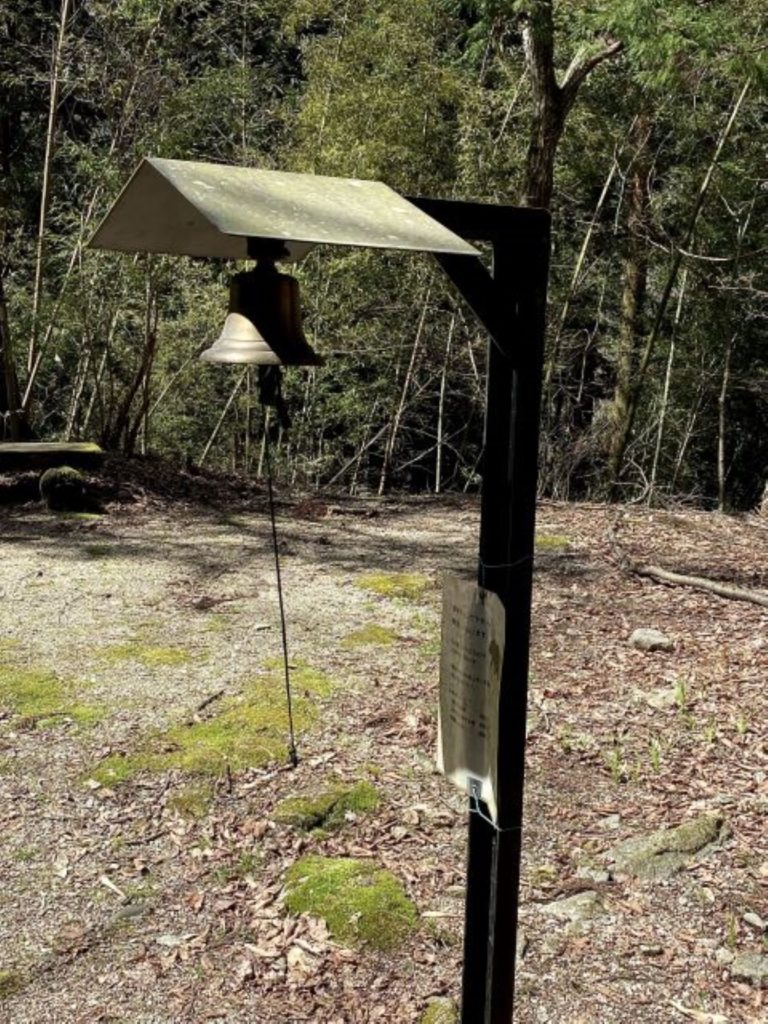
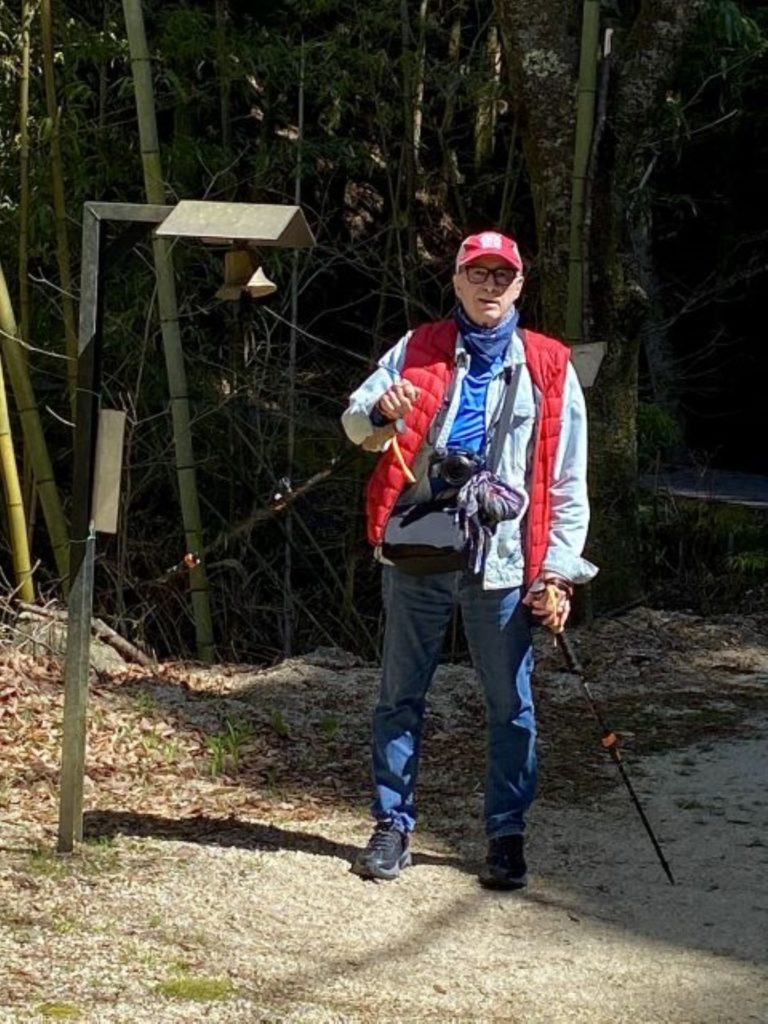
Hunger pains arose at trail’s end. Luckily, we found Pork Katsu, a popular Japanese dish of breaded, deep-fried pork cutlet that’s been pounded thin, then coated in flour, egg, and breadcrumbs, then fried until crispy and golden brown. It’s often served with a side of rice, shredded cabbage, and sweet and savory tonkatsu sauce. If this pork dish sounds familiar, think of chicken fried steak (US), Milanesa (Mexico), or Wienerschnitzel (Germany). Wherever, whenever, it’s oh so tender, delicious, and satisfying. A cold Japanese beer easily washed it all down.
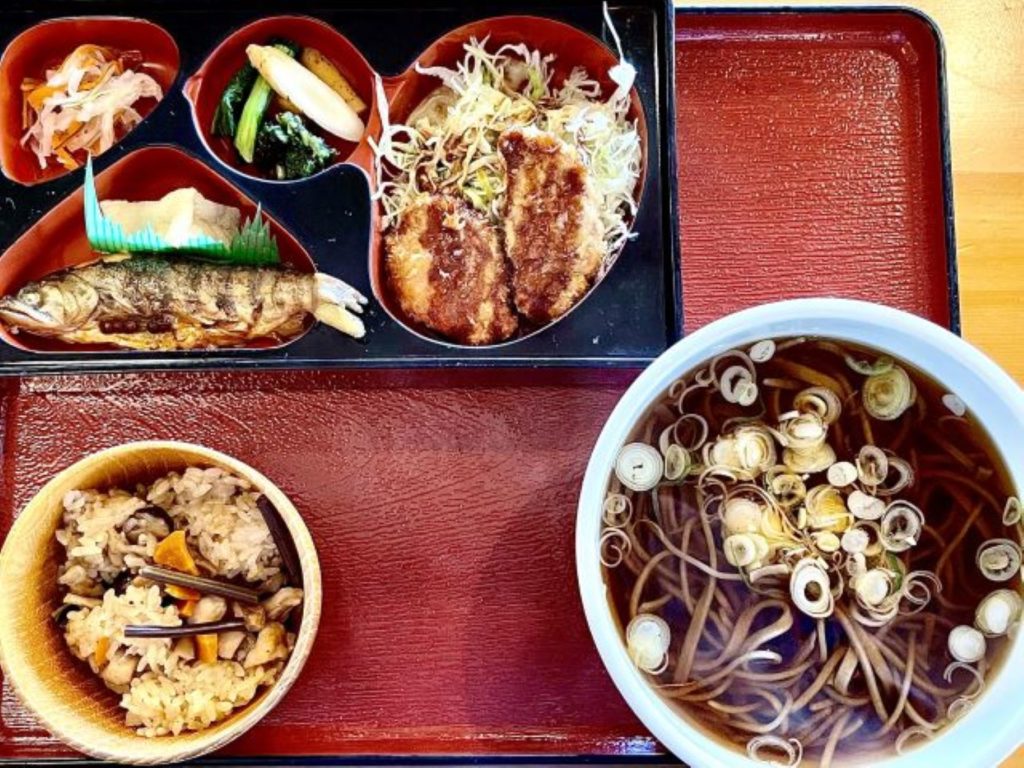
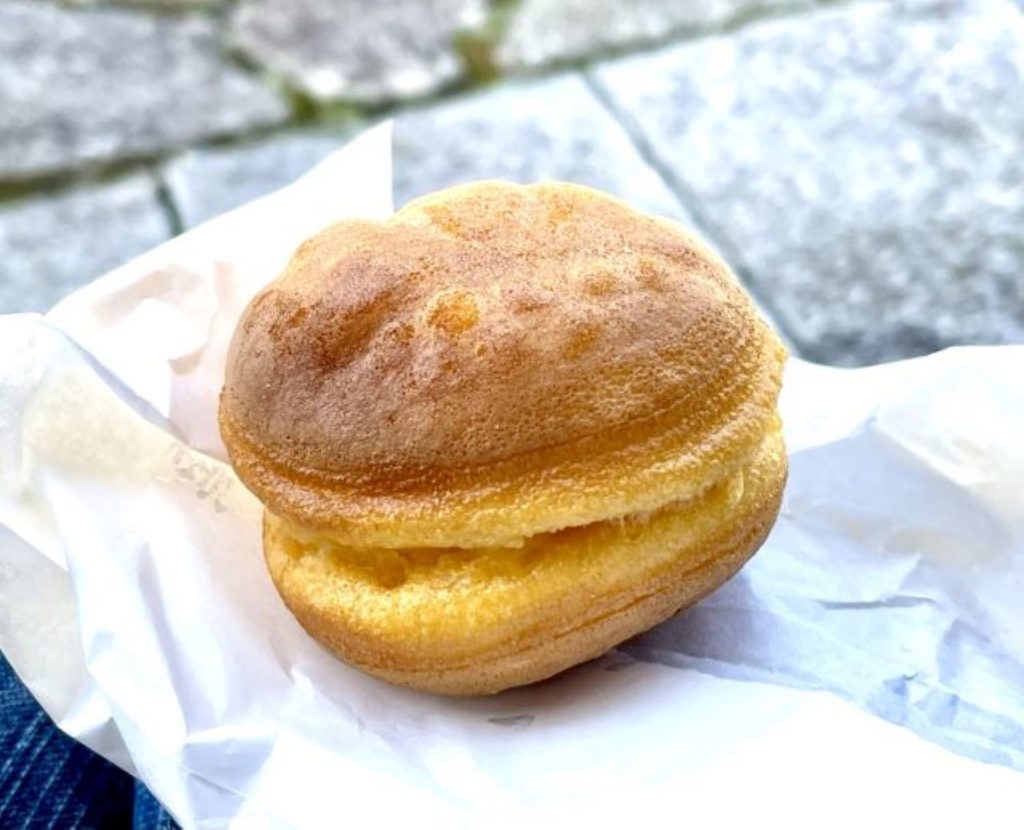
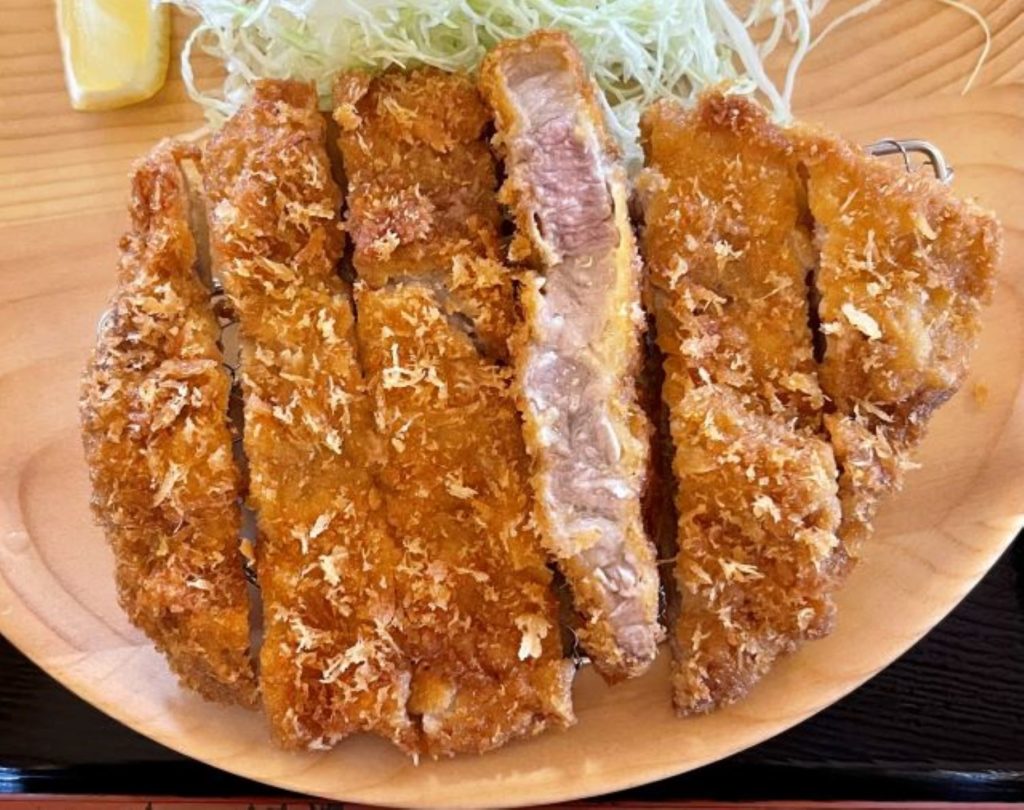
We’re staying in Kiso-Fukushima, which was a major post station/checkpoint along the Nakasendō Trail. Post towns or checkpoints played fascinating and important roles during the Edo period.
The elite Tokugawa (Edo) rulers viewed these towns as designated government outposts, collecting tolls and tariffs for revenue. They, too were considered station-like rest stops and provided services: food, shelter, and transport for the Daimyo (feudal lords), samurai and members of the Tokugawa, and others traveling with legitimate business concerns.
These were mandatory pilgrimages to the Edo Shogunate, and were followed by their entourage of fellow travelers: pilgrims, monks, merchants, peddlers, entertainers and assorted riffraff, hangers-on in a colorful, long parade.
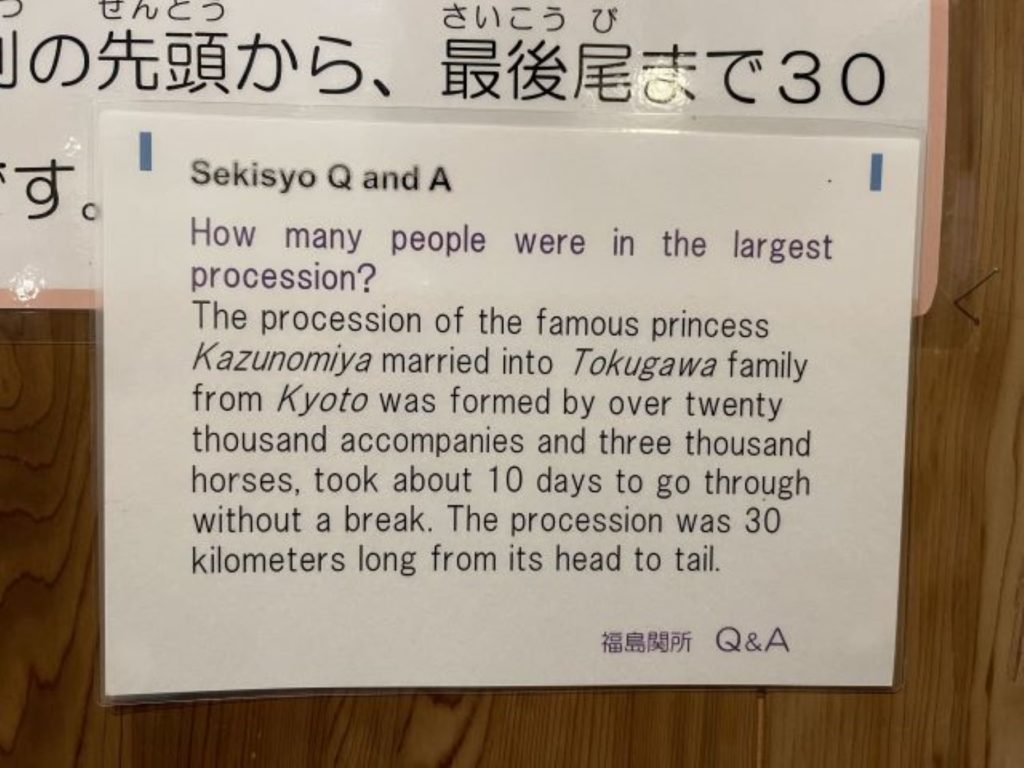
At the post stations, they would wait, present their travel papers, possibly be searched for weapons, and pay their tolls; all for the privilege to travel the highway. Any person not connected to officialdom had no business being on the trail unless they were part of an authorized procession. Women were banned from traveling alone and officials were on the lookout for women in disguise, as they were usually a sign of a planned revolt or insurrection.
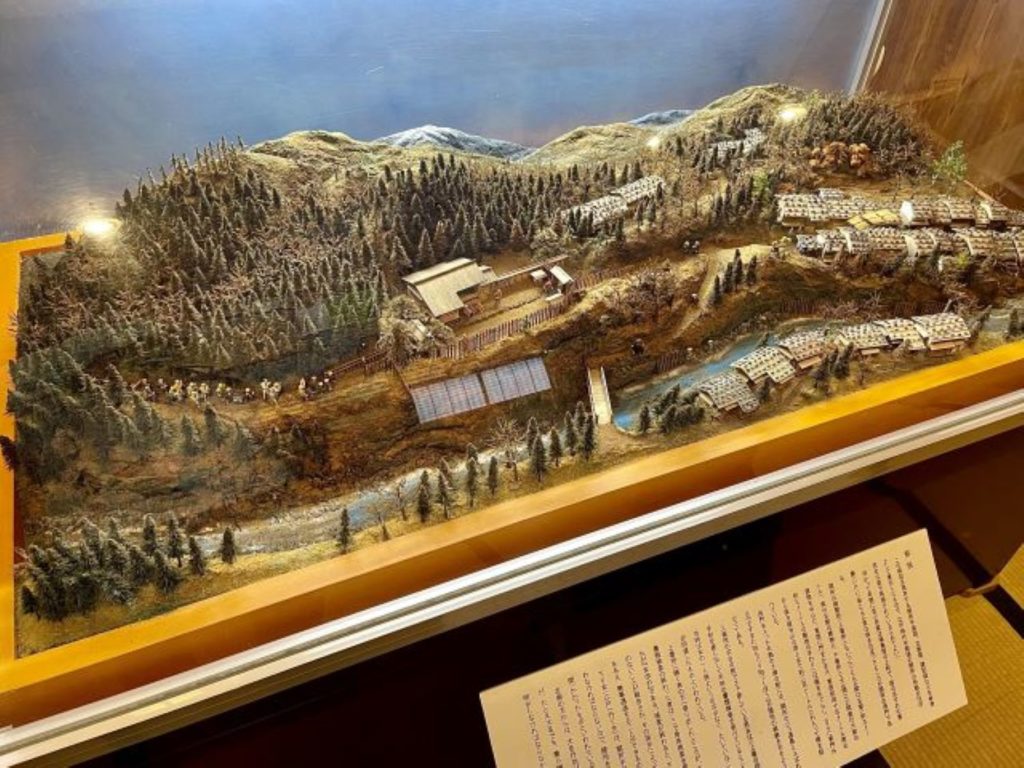
The Kiso-Fukushima Sekisho Ruins were designated a national historic site in 1979. A big gate looms over the old remains, hundreds of years old. It leads to the reconstructed checkpoint building located on a hill overlooking the Kiso River. From this vantage point, one can easily get a 180 degree view of what would have transpired below – the attached museum’s display shows an example of the busy post town.
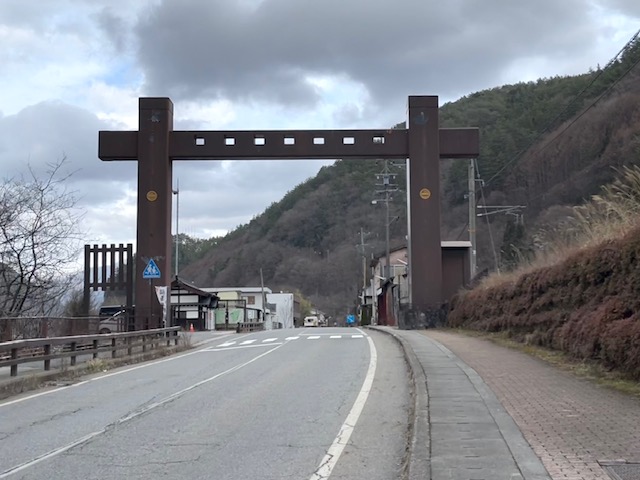
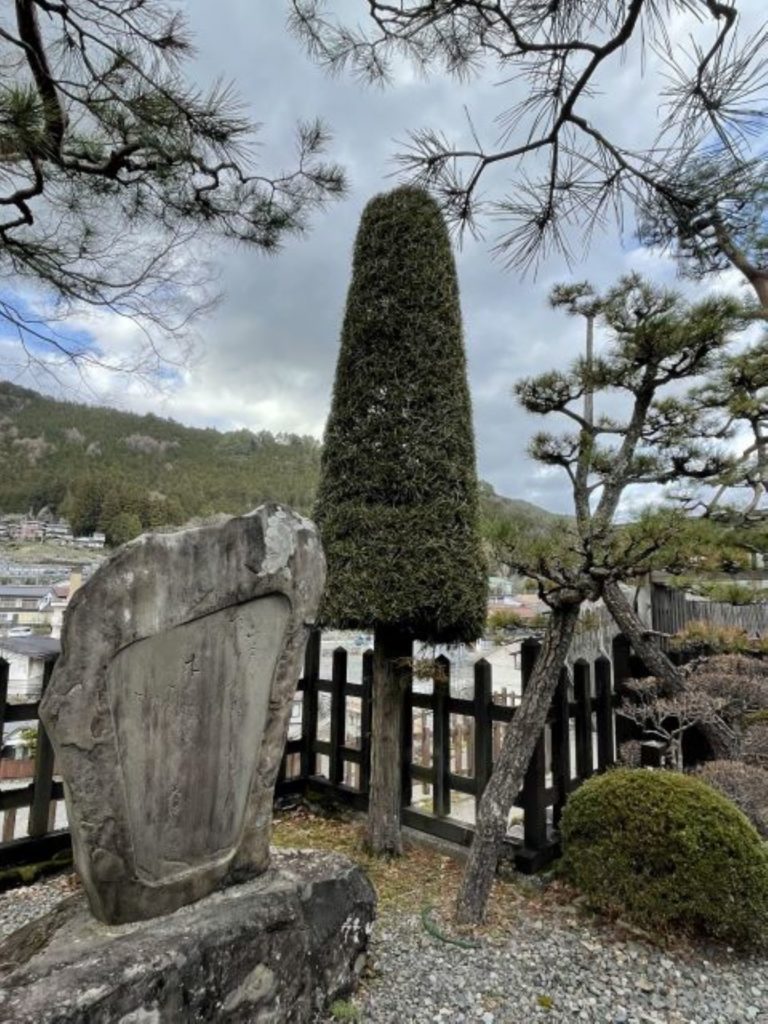
The museum also exhibits an eclectic assortment of weapons, handcuffs, instruments of torture, armor, and wooden passes that travelers on the trail were required to carry. Our guide encouraged us in a little bit of playtime, dressing us up as important feudal dignitaries, sans swords.
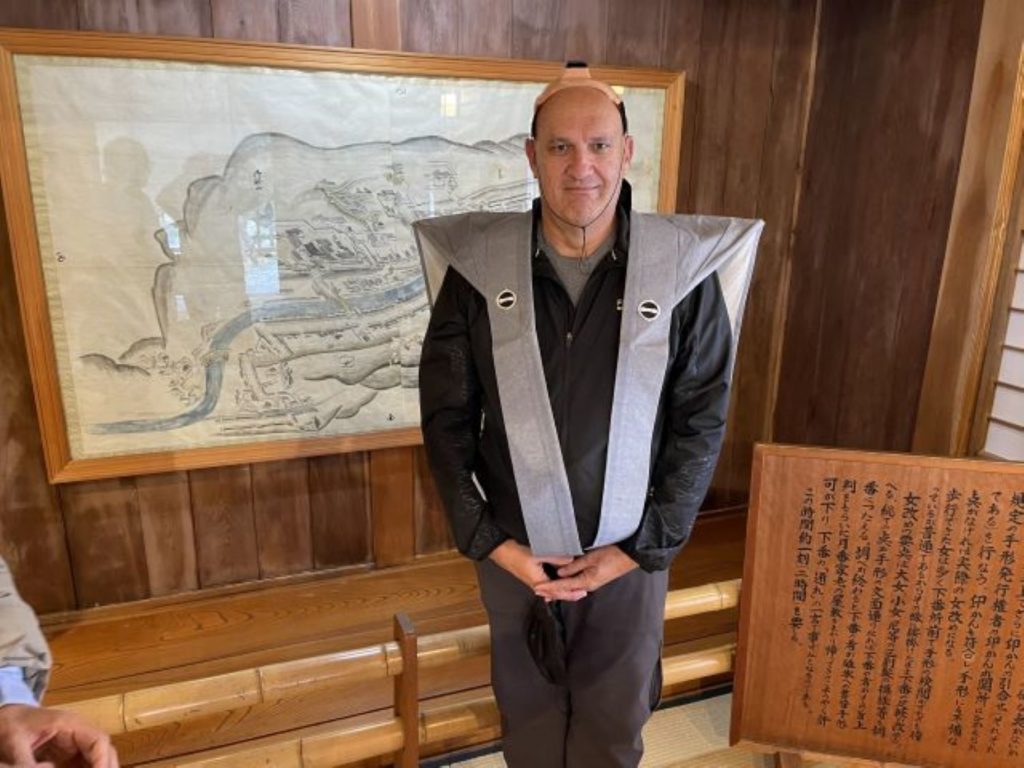
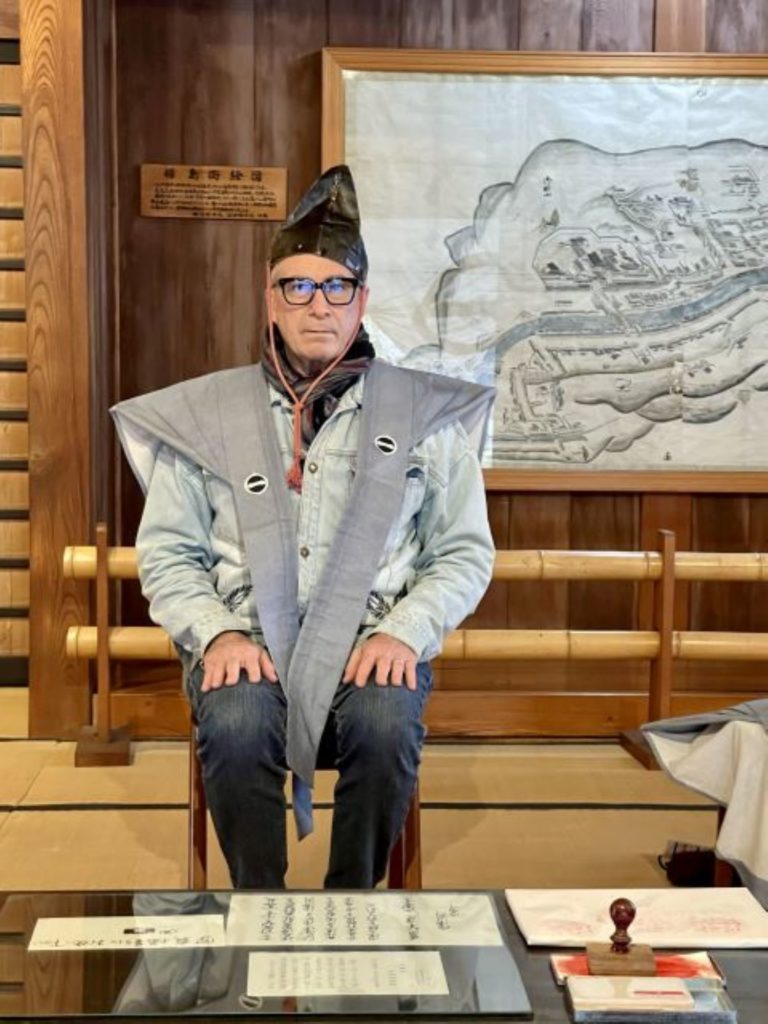
Here, too we visited Kami O’Toiya, the merchant family residence of the Tezuka Family and their historic and valuable archives. We were guided by a proud woman who still lives in her ancestral home that’s been in the family for twenty-two generations; that’s more than 400 years! The family ran a Toya (“Door to the Valley”) during the time of the Edo Period (1602-1867), administering the town’s affairs. The property is designated as an important cultural property.
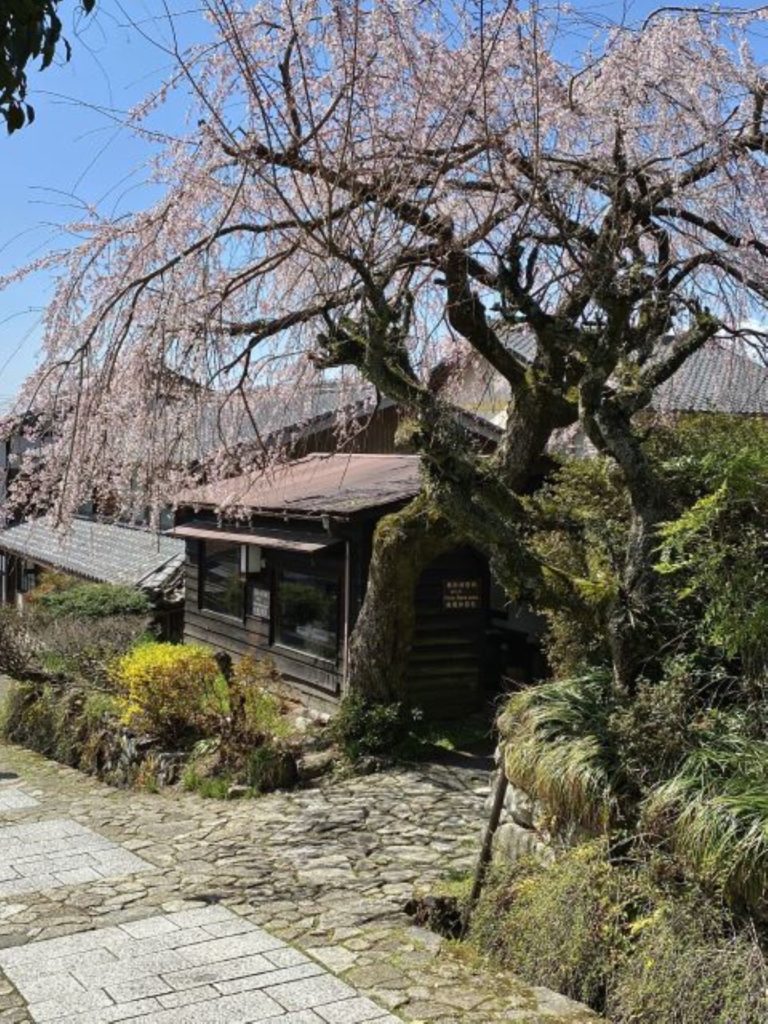
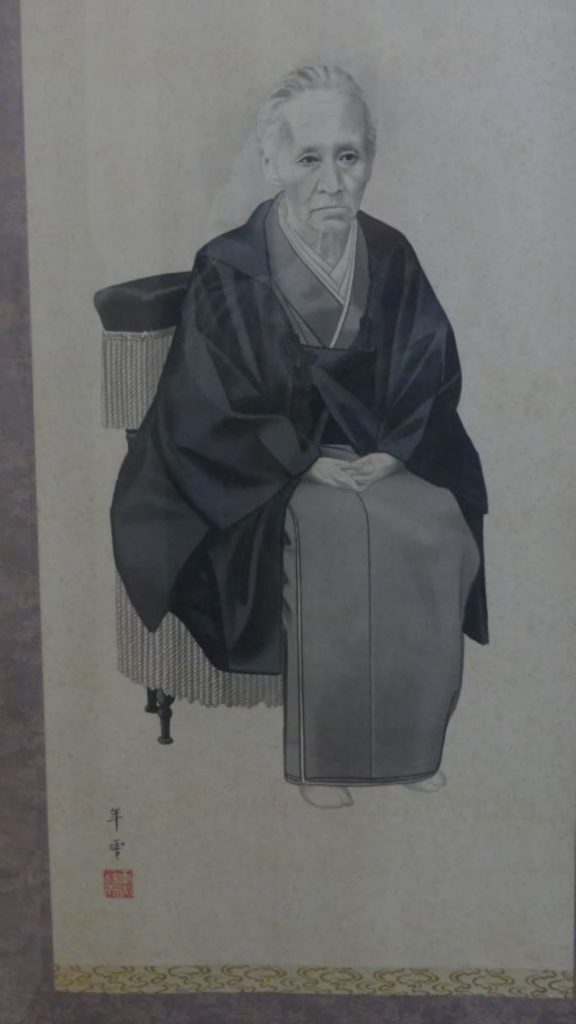
Exhilarated from the day’s nature walk in the woods, and historical explorations, we return to our second ryokan, and settle in for another night.
Ryokans are Japanese inns found throughout the countryside, and especially in hot spring resorts. More than just a place to sleep, they’re an opportunity for the traveler to enjoy the traditional lifestyle, local foods, and unique hospitality. Their origin is said to date back to the Nara Period (710AD – 794AD).
We’ve got five nights (out of 16) scheduled at ryokans; each one more unique than the other; incorporating mountain settings, a riverside and a monastery.
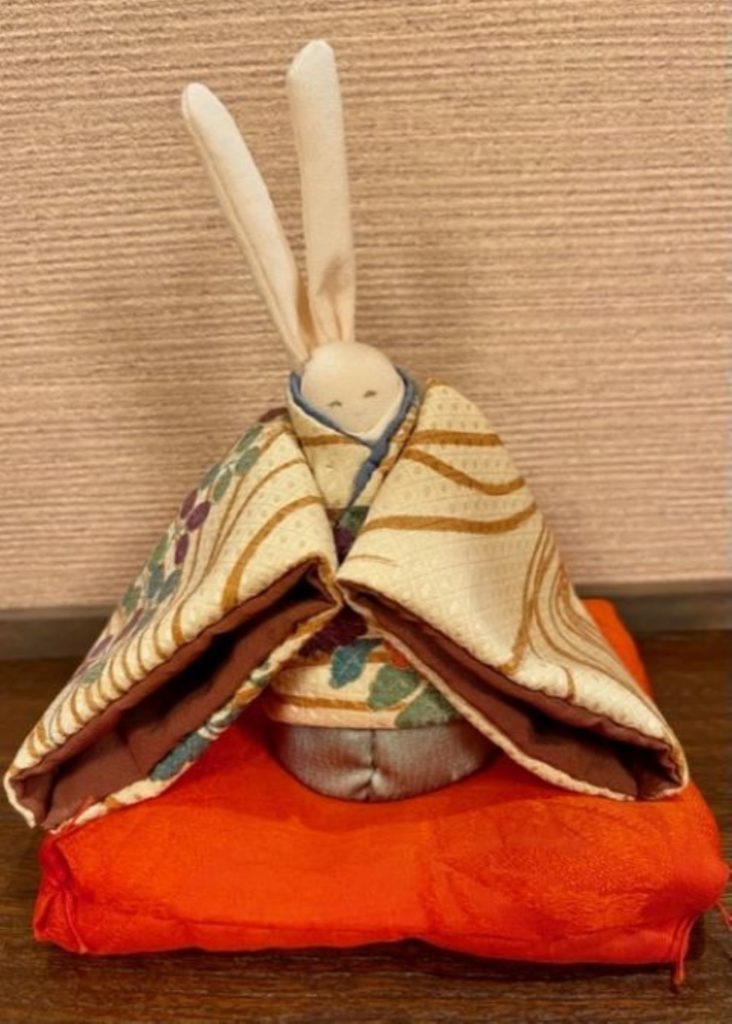
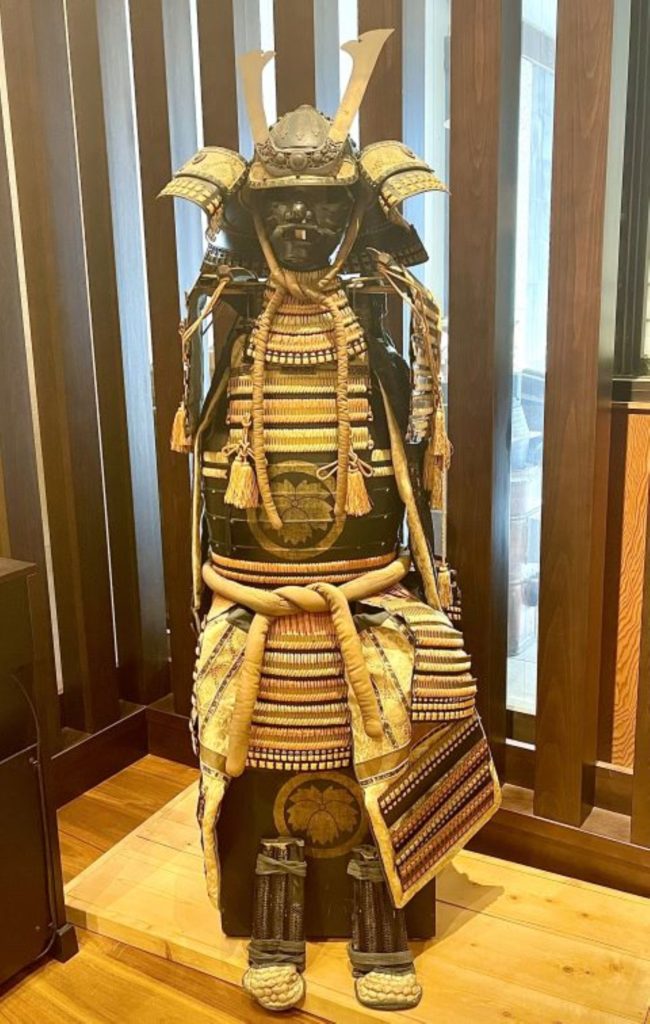
Generally expensive, but well worth indulging in, ryokans offer elaborate dinners in the evening, followed by traditional Japanese breakfasts in the morning. What sets them apart are rooms with tatami mat floors, futon beds, shoji screens, low tables, and chairs; along with Japanese-style baths and cuisine featuring local flavors. They’re popular with both Japanese and foreign visitors alike. I know this tourist fell madly in love with them.
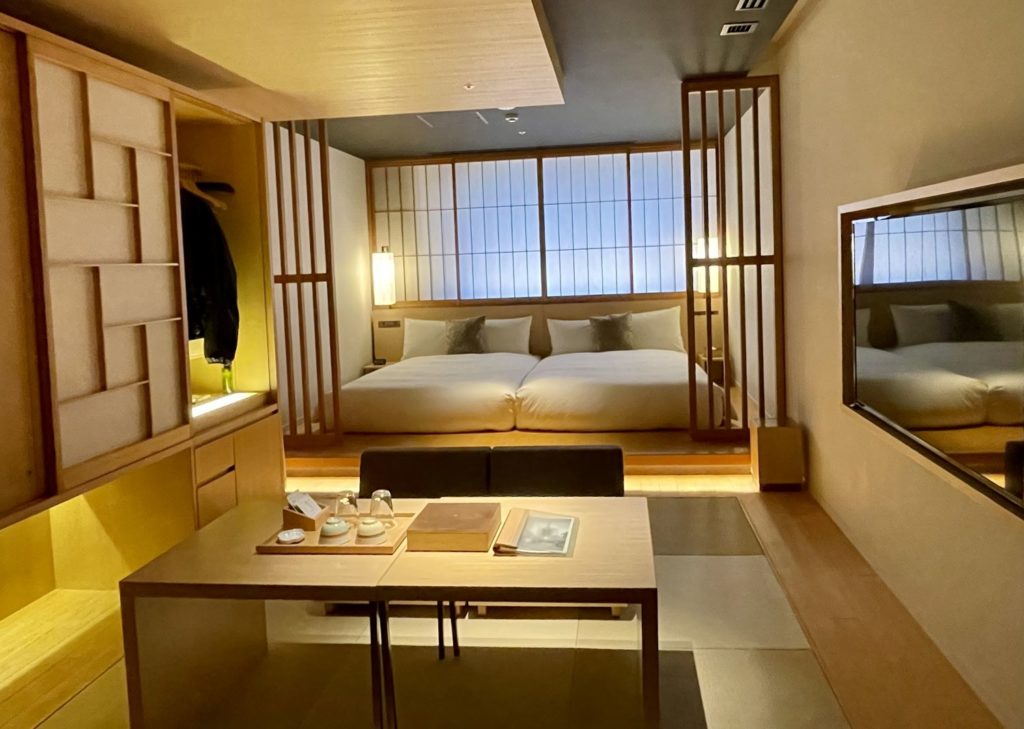
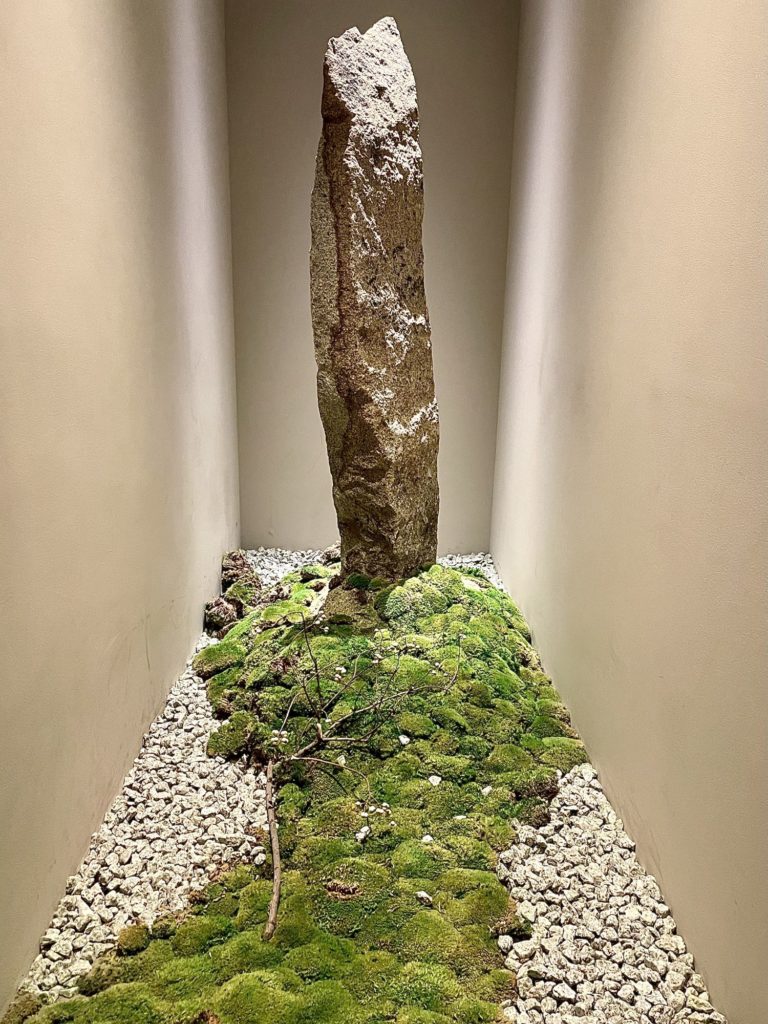

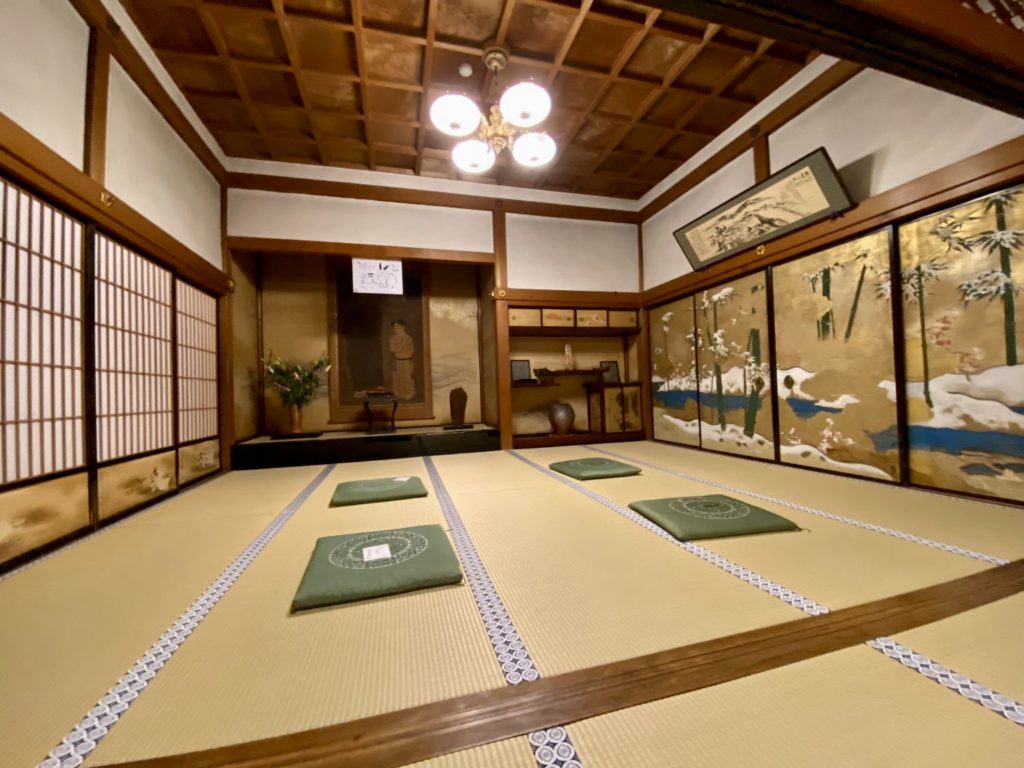
Because of their emphasis on tradition and atmosphere, they may appear rigid and intimidating for the first-timer unfamiliar with the rituals and procedures. Of course, the first and most important being “shoes off” … left by the door’s entryway, or in one case, the lobby. Left there, I’d forgotten the next morning, throwing me into a frenzy looking for my shoes. David simply replied, “You left them in the lobby.”

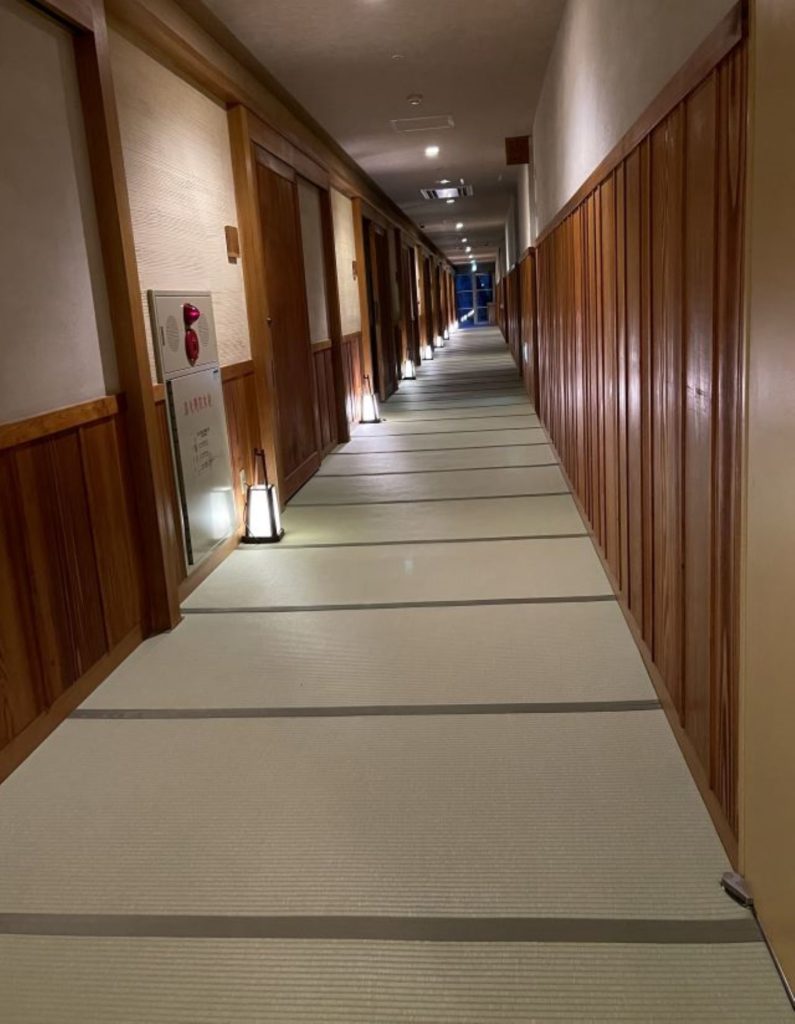
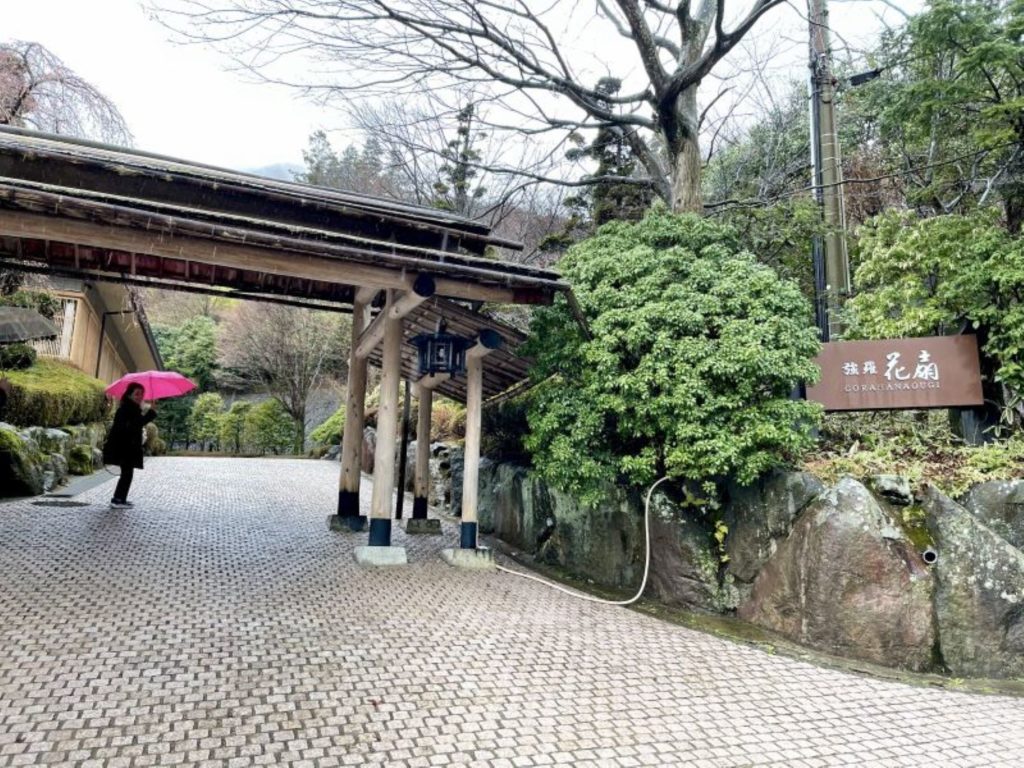
The Gora Hanaougi, our first ryokan, offered a private mineral onsen off our room’s covered patio, with a beautiful view of a mountain forest. The public onsen had three different areas, including an outside grotto, all with its own etiquette standards that one must follow to a tee.
These baths are often fed by natural springs and allow guests to relax and unwind after a long day of sightseeing or hiking. It’s important that guests follow protocols when using the baths: clothes are forbidden, and one must thoroughly wash themself prior to entering, therefore eliminating any contamination (via skin or cloth). You’re supplied only with a ridiculously small, modest towel. During my first visit to an onsen 20 years ago, I threw it over my shoulder, not knowing the rules. This time I made sure not to make the same faux pas.
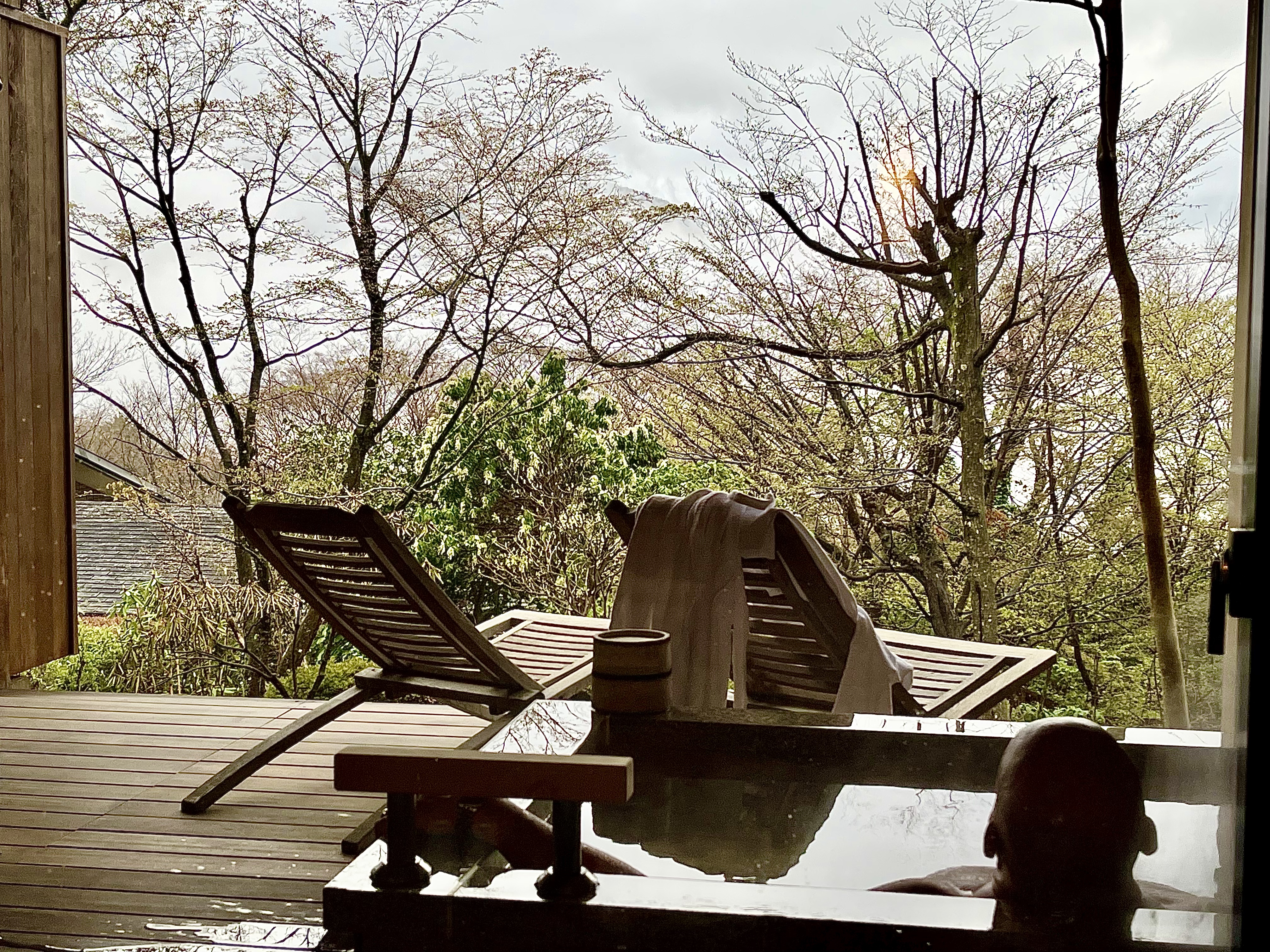
Soaking is an extremely popular and important Japanese custom that plays a vital role in their daily lives. I must have been Japanese in a past life, for I love a bath, and when travelling, if I find a bathtub big enough, then it’s soaking time for me ~ such a pleasurable experience ~ I can’t get enough of it. Plus, the minerals in the onsen waters have beneficial, healthy results, and leave your skin silky smooth soft.
Although technically there’s no dress code necessary, the ryokan will offer guests a lightweight, cotton Yukata, (robe) Tabi (split-toe socks) and Geta (sandals/flip-flops) that you can wear during your stay. Yukatas are extremely comfortable. I own three of them and bought another at our first ryokan.
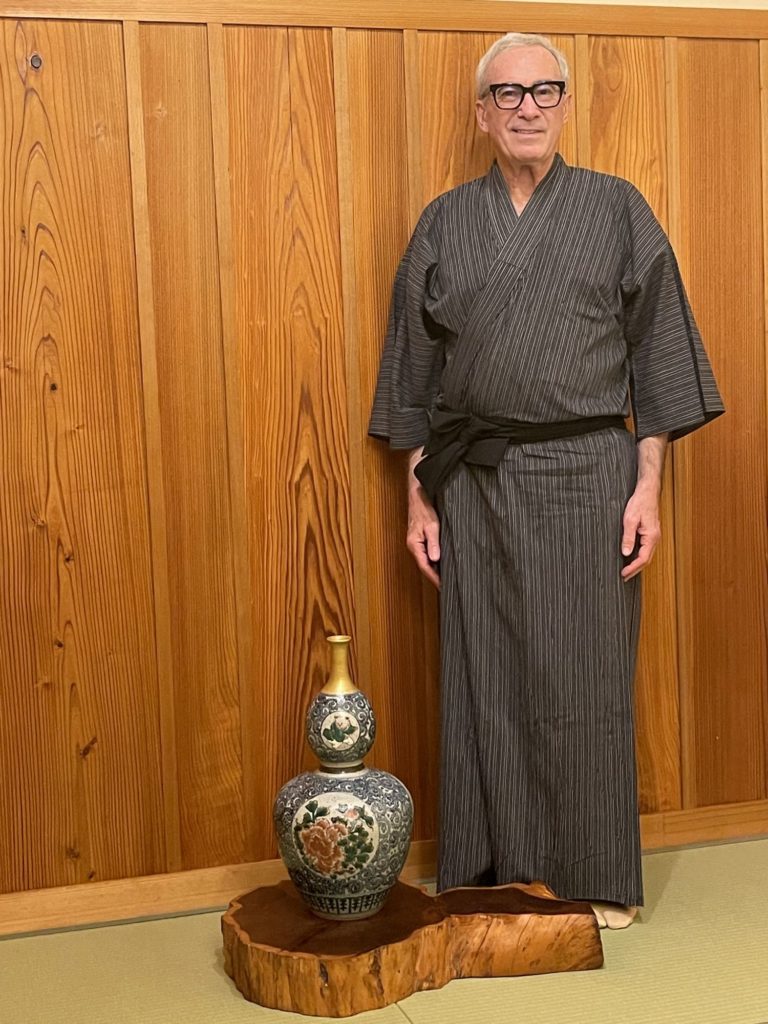
Typical ryokan meals are traditional, multi-course extravaganzas known as Kaiseki, an elaborate and elegant multi-course dinner usually featuring seasonal, regional ingredients. Kaiseki is not only a meal, but also a cultural encounter encompassing many distinct features.
The Kaiseki meal is designed to be contemplative and meditative. Guests are encouraged to savor each course slowly and appreciate the beauty and artistry of the food. Kaiseki is considered one of the highest forms of Japanese cuisine.
Warning! Food Porn photos follow …
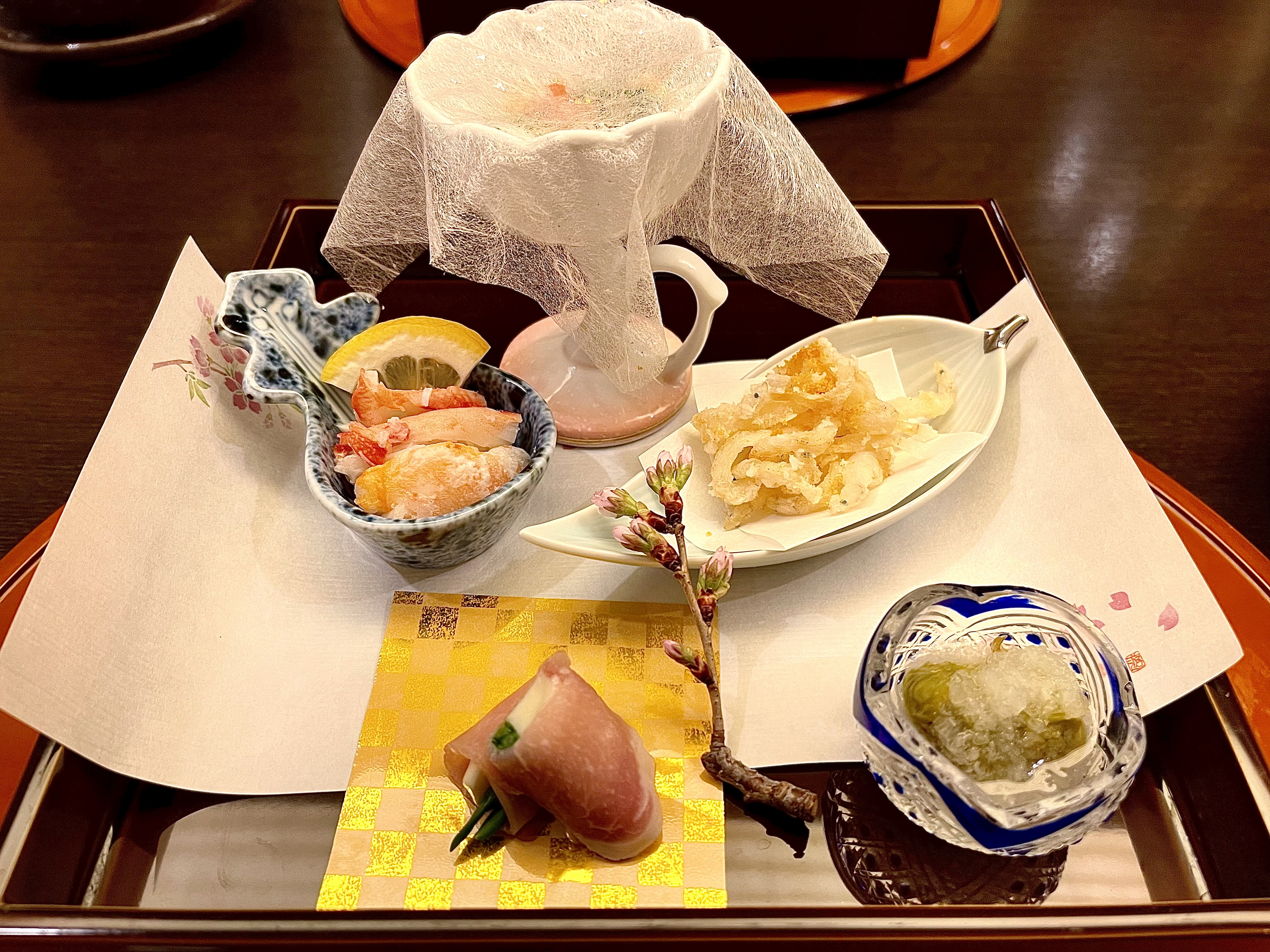
Chefs strive to create a balance of flavors, textures, and colors in each dish, and to highlight the natural beauty of the ingredients. Finished dishes are carefully presented on plates that are chosen to enhance both the appearance and the seasonal theme of the meal. Dishes are beautifully arranged and garnished, often with real leaves and flowers, as well as edible garnishes.
So, here’s my conundrum … when our dinner was presented, I didn’t know if I should eat it or frame it. What was presented before me was such an artistic endeavor, leaving me to sit and stare, studying all the delicate details.
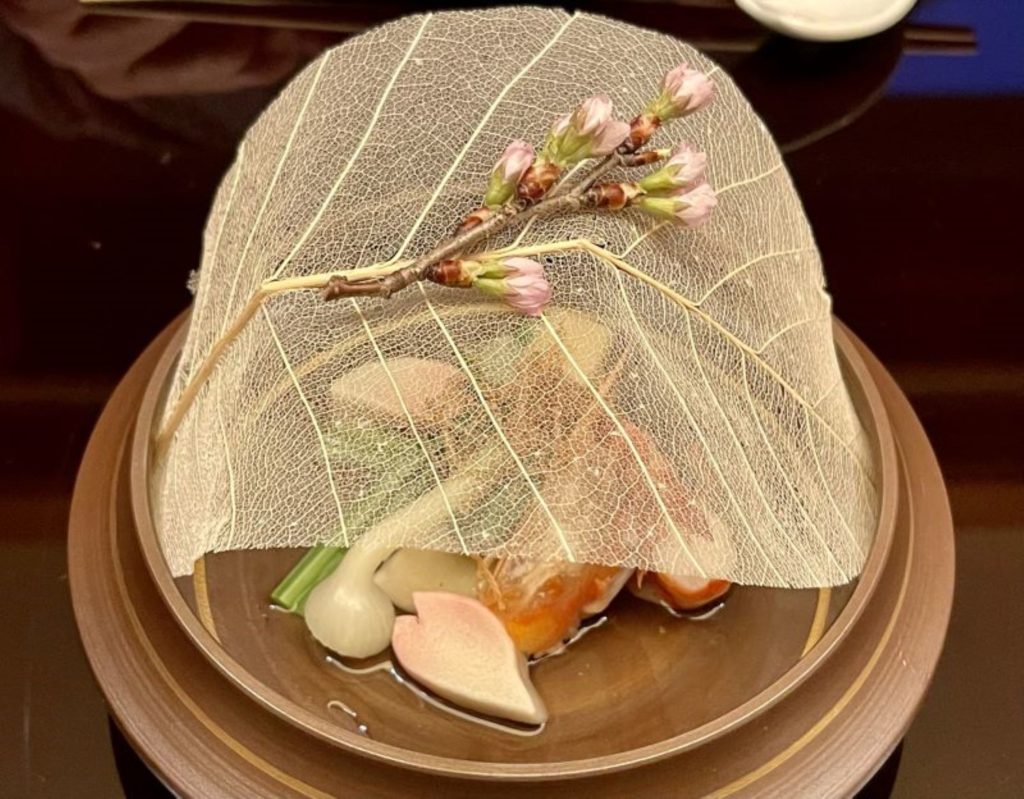
Here’s a sampling of an elaborate dinner one night; copied directly from the vellum menu sheet accompanying the meal. It read like an adventure novel. What new tastes and textures were we going to experience? Adding to the fun and excitement, cooking our protein would be a part of the dining experience.
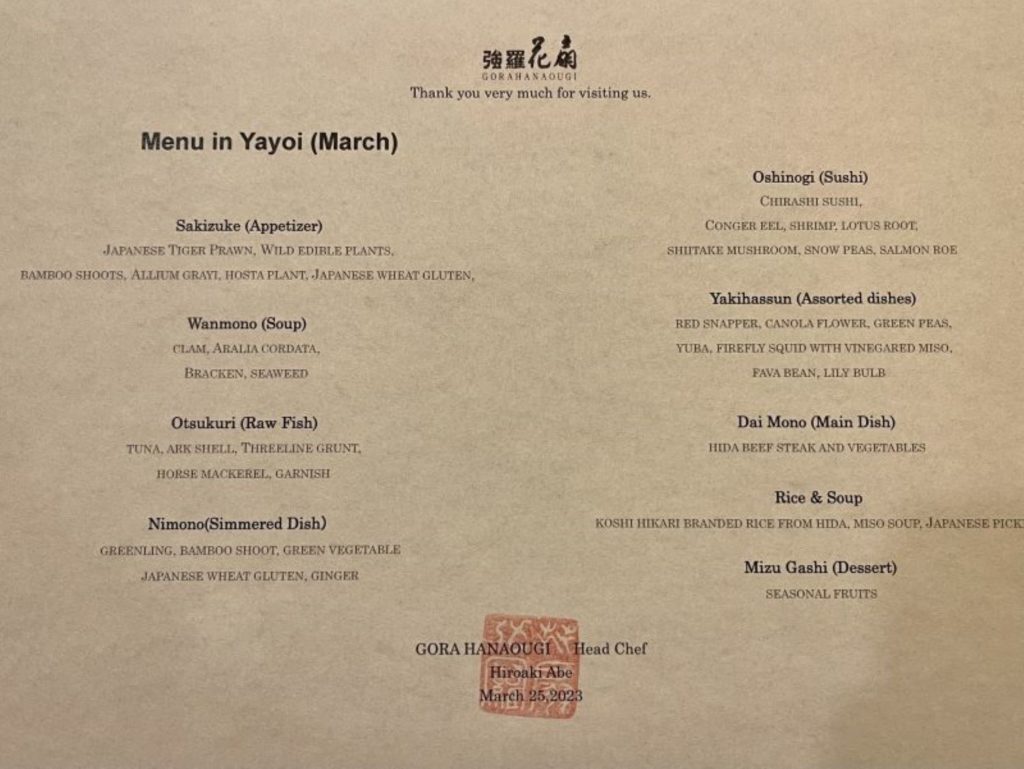
Listing the small dishes in order that they were presented, but not necessarily the order in which we ate them … each dish shouted up to me, “Taste me first!” I can fairly say my palate was stimulated almost immediately.
We’d discover later on through our guides that there’s a specific order to eat the dishes:
• Sakizuke (appetizer) Japanese tiger prawn’s wild edible plants, bamboo shoots, allium grayi, hosta plant, Japanese wheat gluten

• Wanmono (soup) clam aralia cordata, bracken seaweed
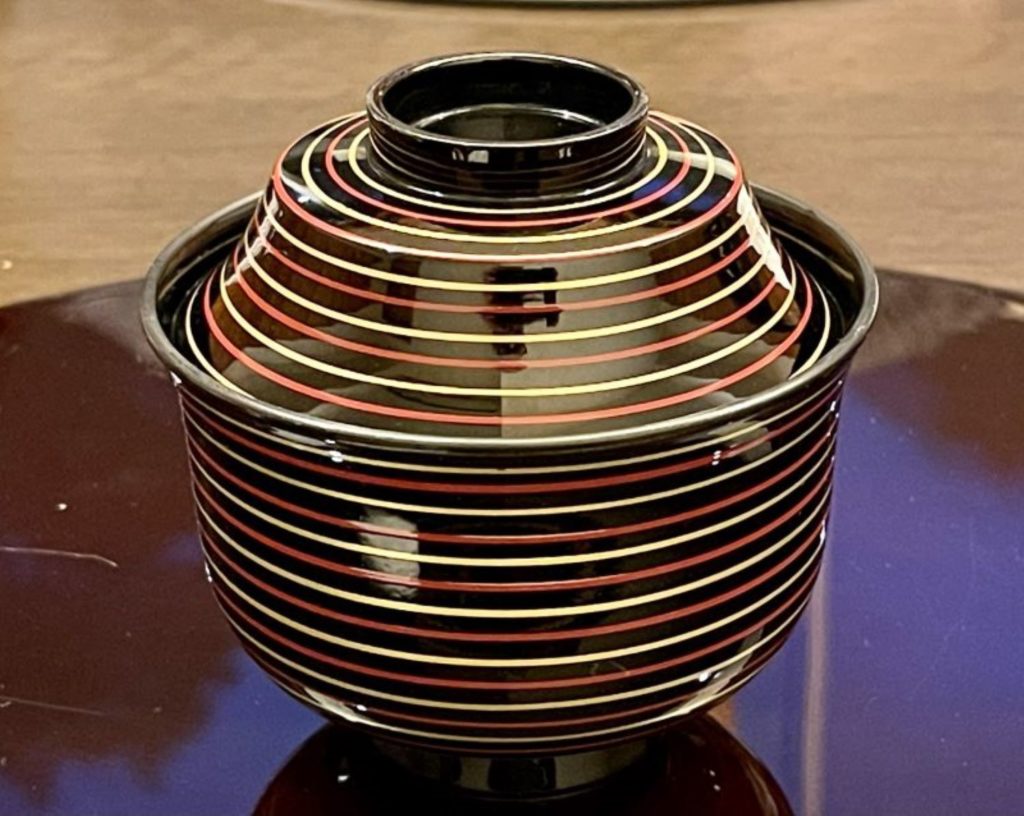

• Otsukuri (raw fish) tuna, ark shell, threeline grunt, horse mackerel, garnish
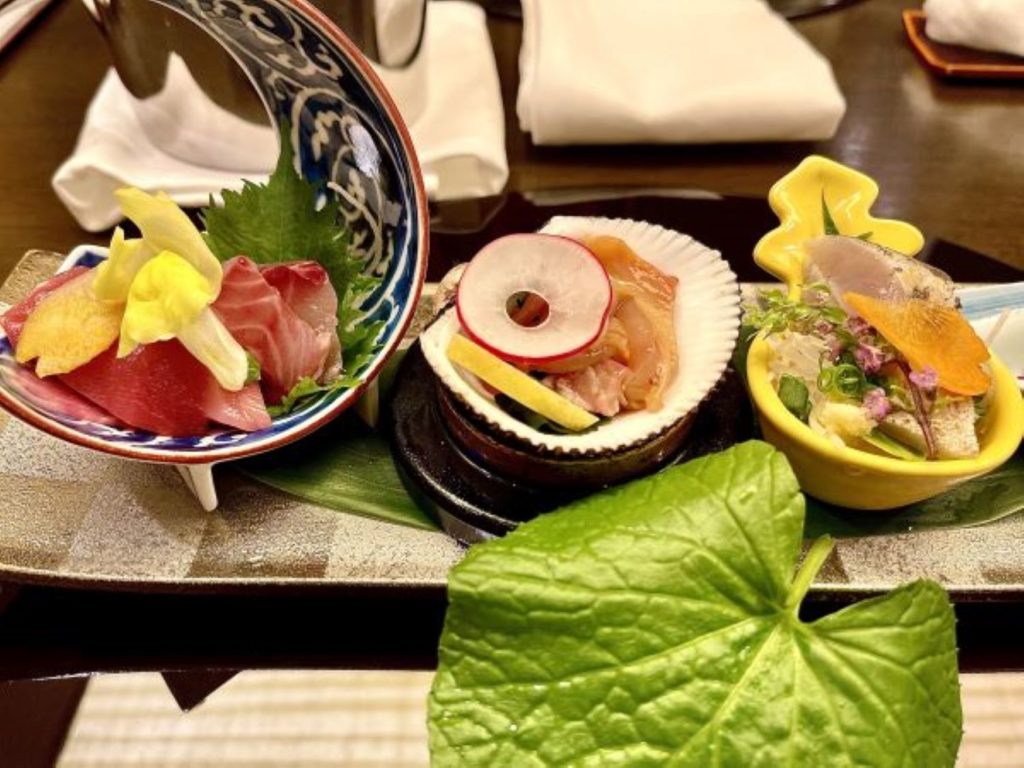
• Nimono (simmered dish) greenling, bamboo shoot, green vegetable, Japanese wheat gluten, ginger
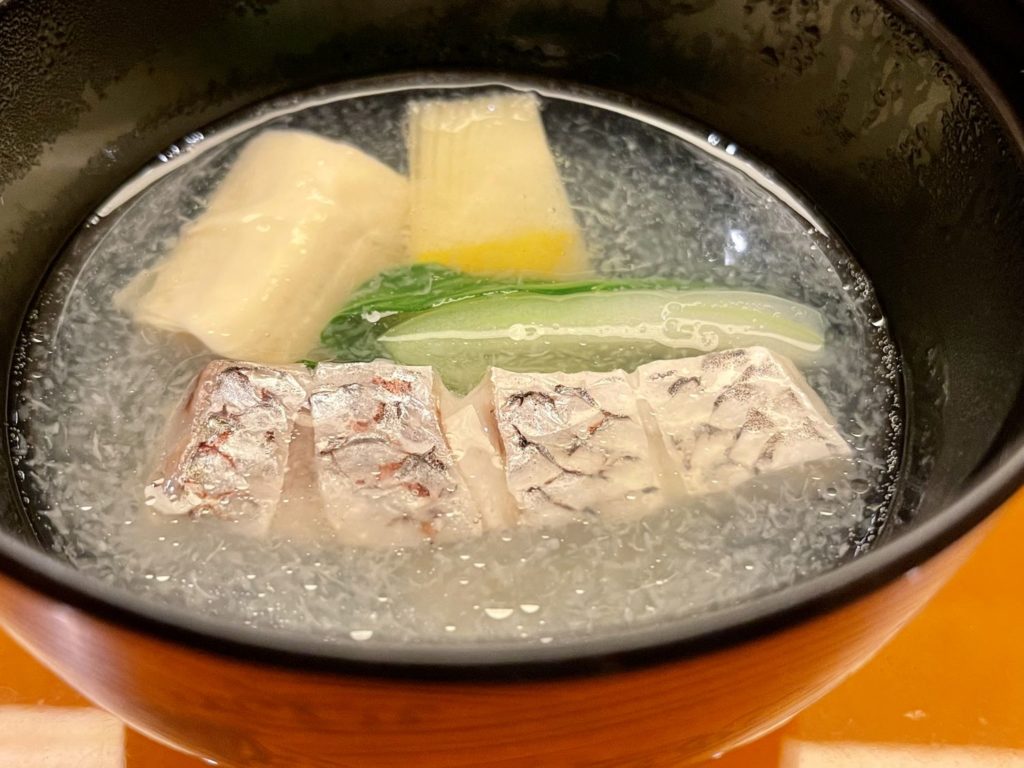
• Oshinogi (sushi) chirashi sushi, conger eel, shrimp, lotus boot, shitake mushrooms, snow peas, salmon roe
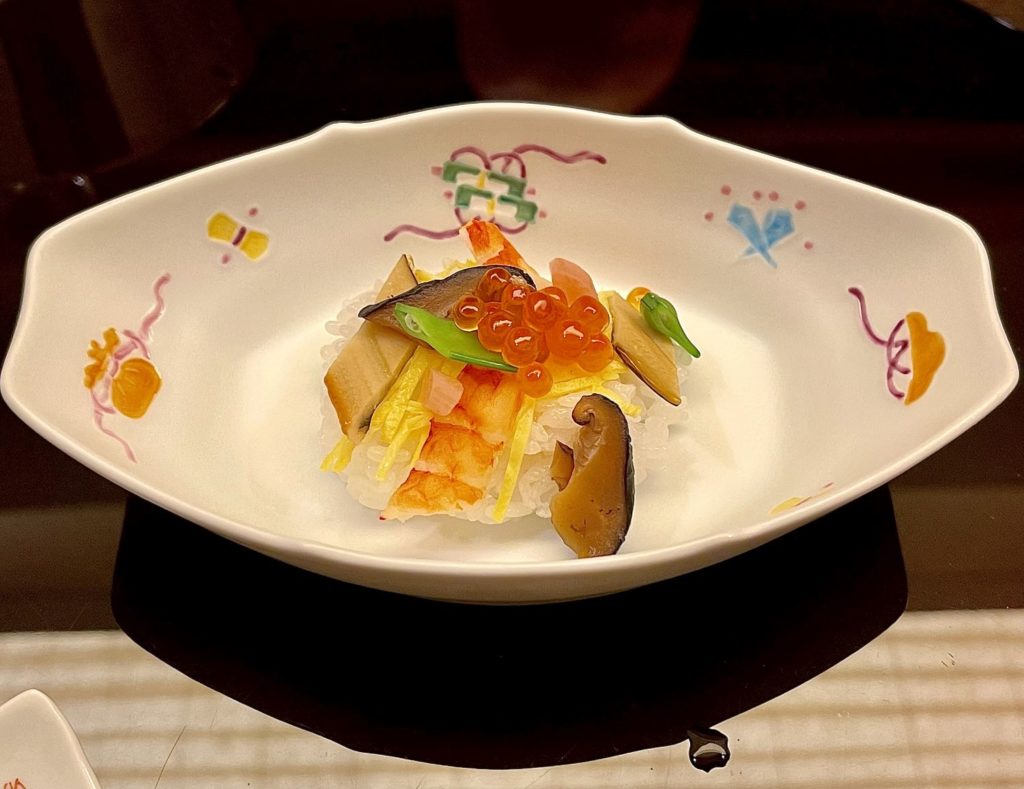
• Yakihassum (assorted dishes) red snapper, canola flower, green peas, yuba, firefly squid with vinegared miso, fava bean, lily bulb
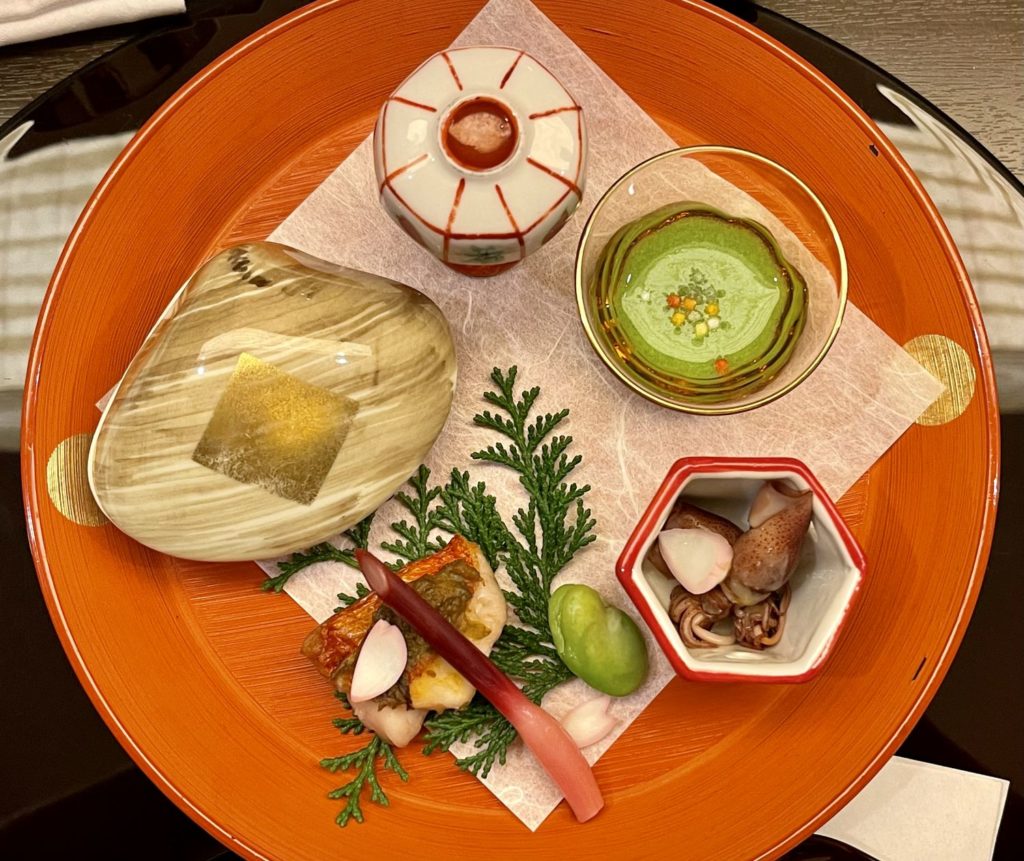
• Dai Mono (main dish) Hida beef steak and vegetables
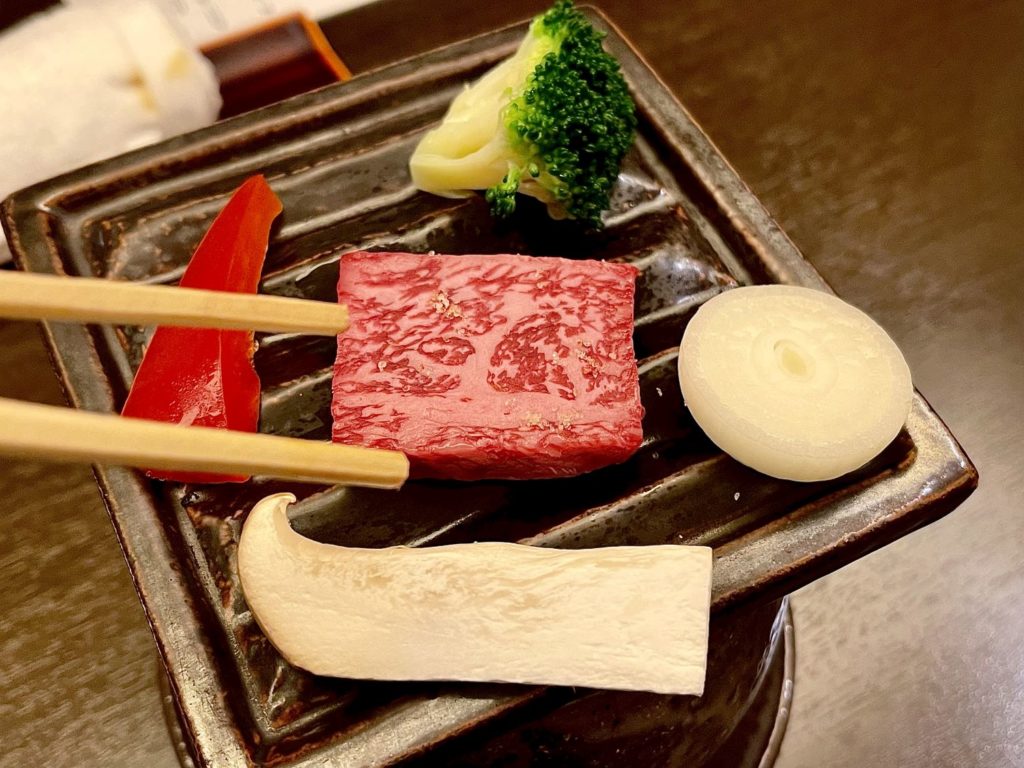
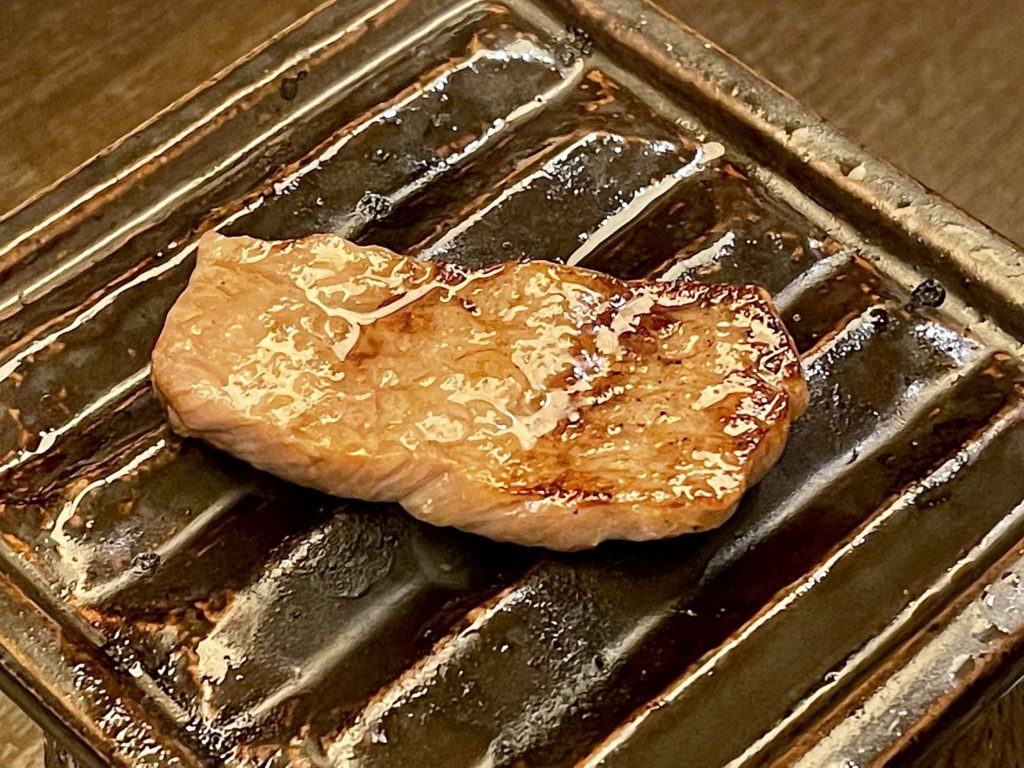
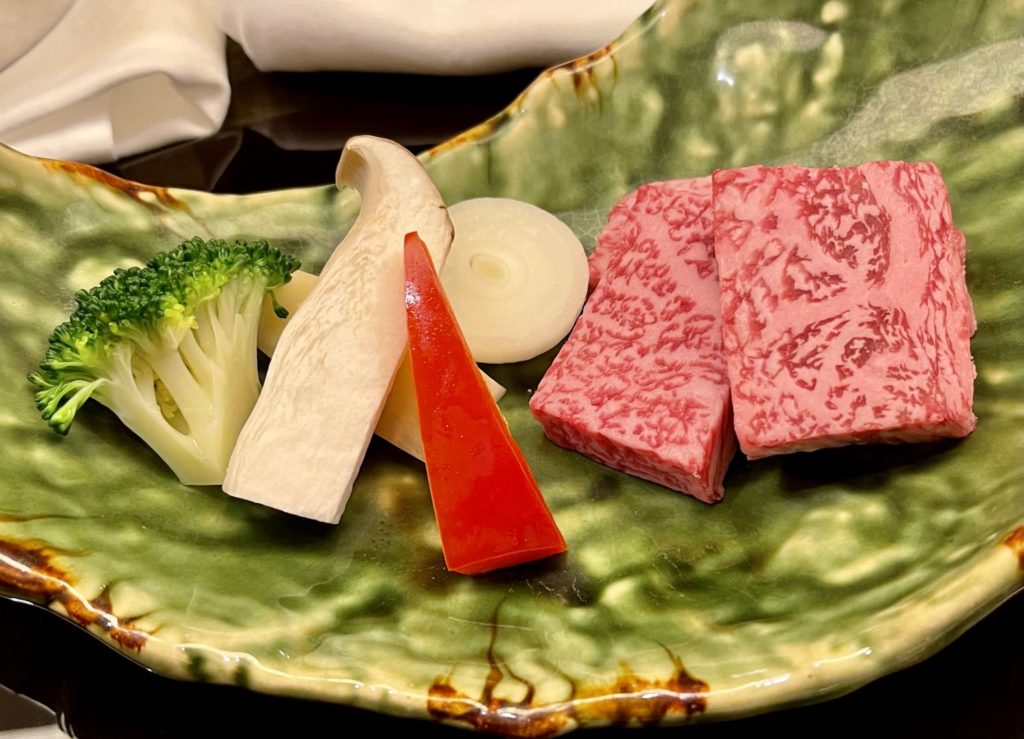
• Rice & Soup, koshi hikari branded rice from Hida, miso soup, Japanese pickles

• Mizu Gashi (dessert) seasonal fruits

Hida beef is known for its intense marbling, giving it a soft, melt-in-your-mouth texture and a rich, buttery flavor. Having now tasted both Kobe on my first trip and now Hida, if I were a beef eater, Hida would be my first choice.
All I can say is that after nine courses, we were fully satiated, and umami satisfied. We’ve been happily practicing Virginia Woolf’s quote for dining well all too well; with lots more eating adventures ahead.
We still had breakfast to look forward to!
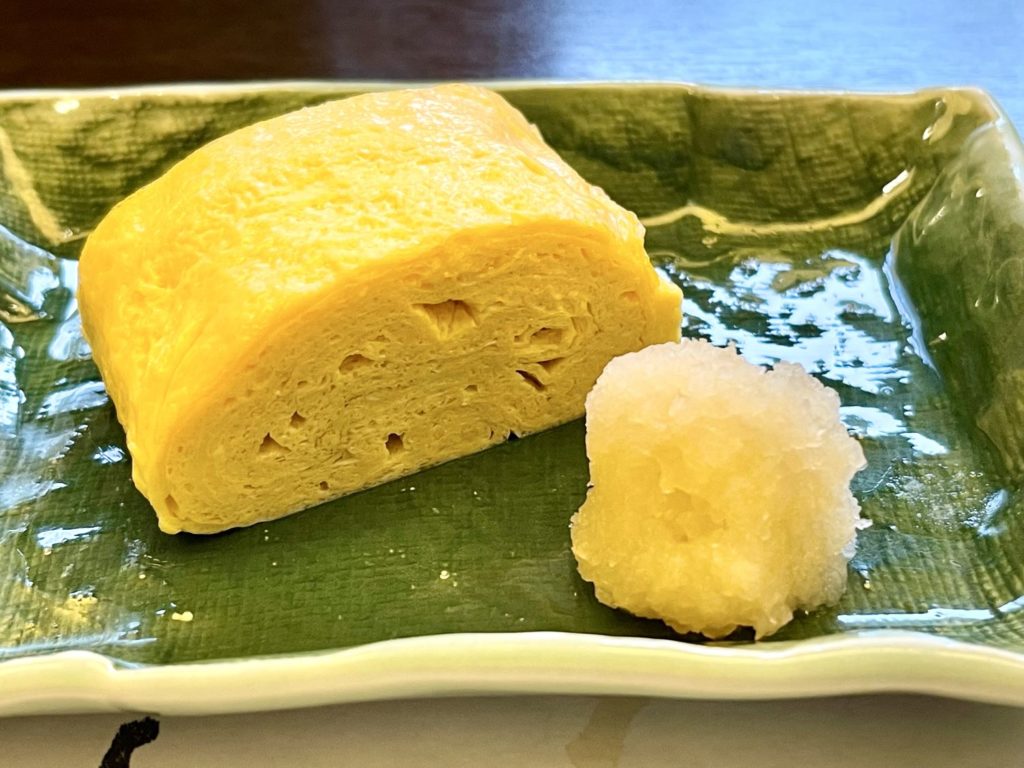
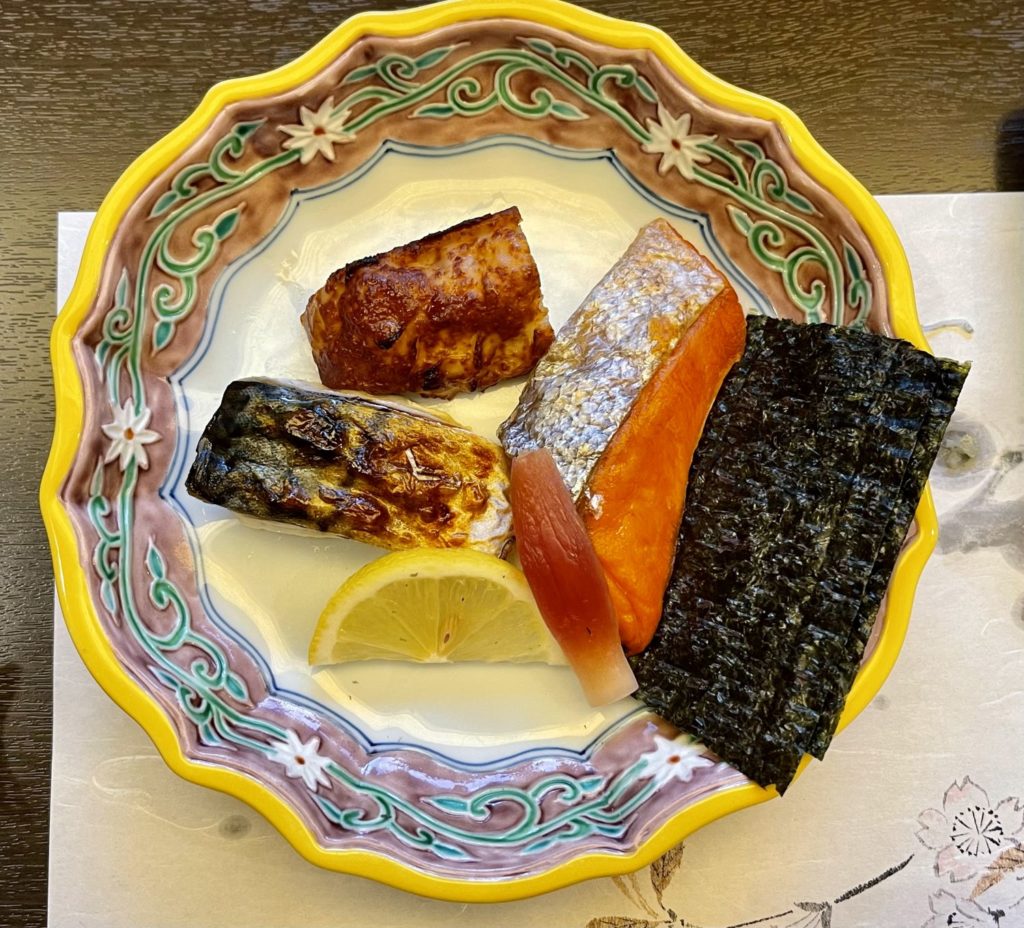
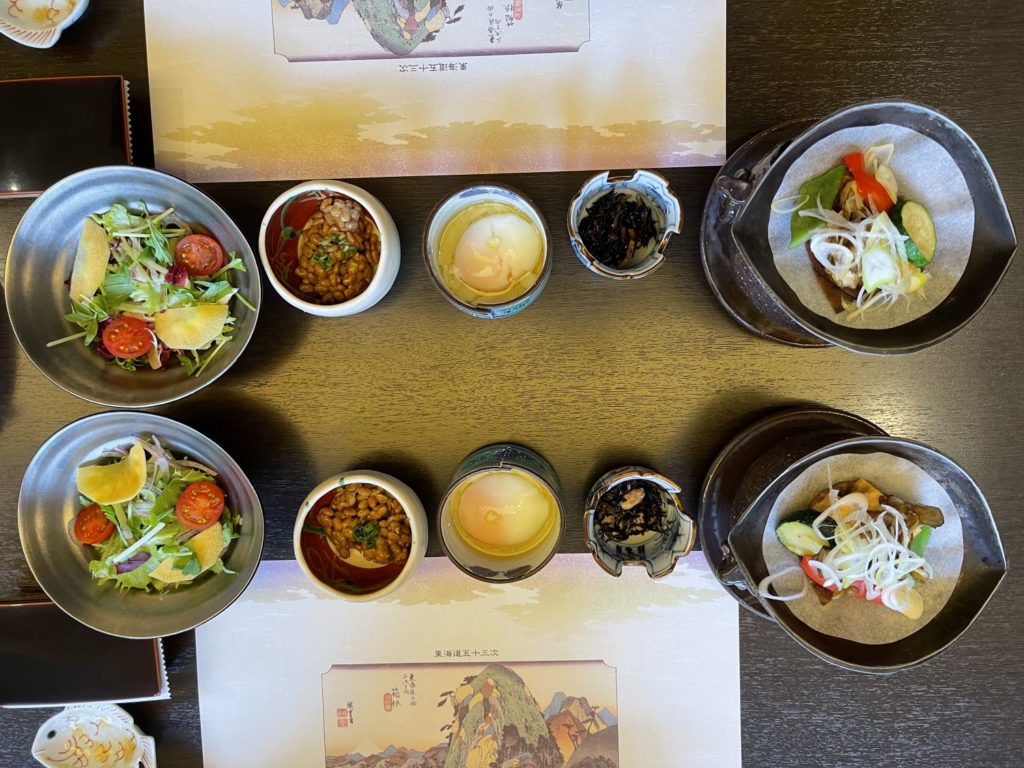
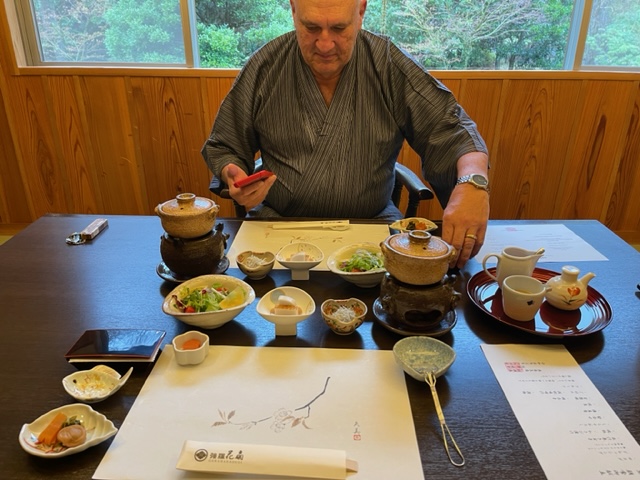
***Japanese cuisine has been designated by UNESCO as a World Intangible Cultural Heritage.
As seen on the street…..
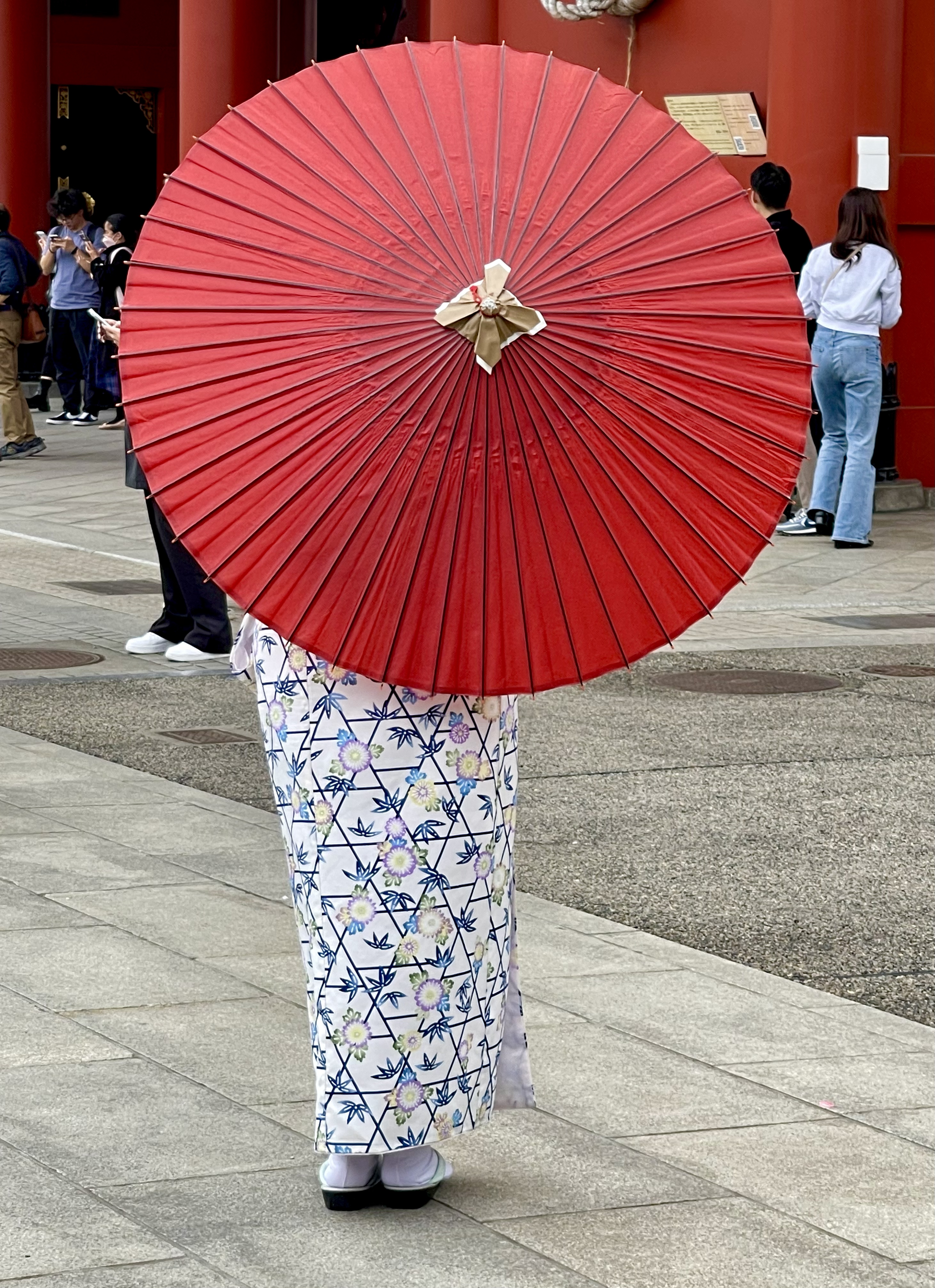

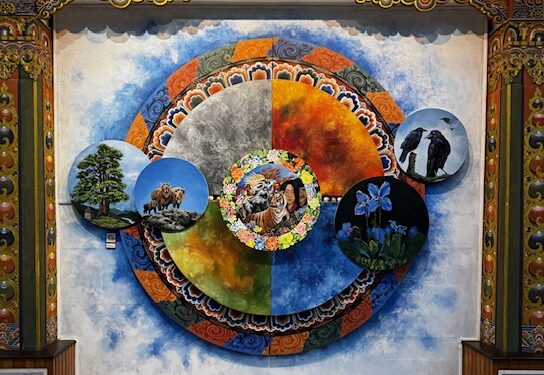
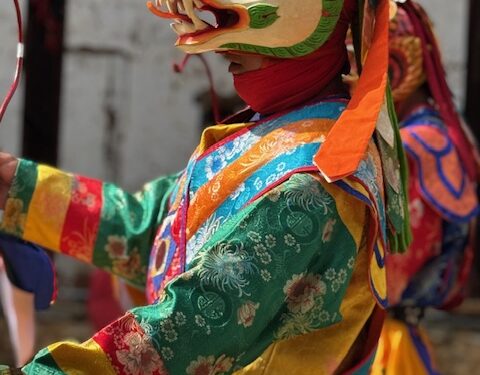
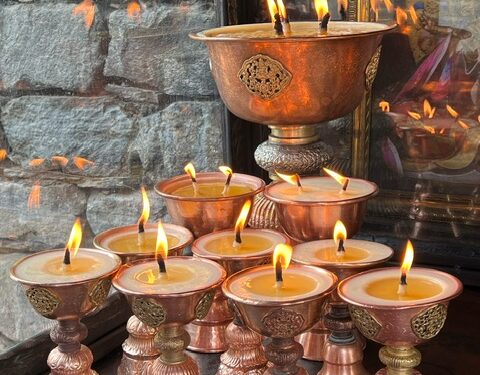



Oh my on all of this!!!
Wow! You two are really looking great too!
if could book tickets right now i would!
Okay, you had me at Kaiseki! That first photo is a marvel of saturated colors as well as gastronomic delights. Had to skip to the end to view all the courses. Lucky, lucky you and David!
What beauty out your train window—Cherry Blossoms and majestic scenery to brighten your travels. Kiso area and Nakasendo Trail provide an idyllic contrast to bustling Tokyo. Peace and tranquility. Well, except for David constantly ringing the bear bell!
It’s fitting that two Feudal Dignitaries such as Samurai Sergio and Magistrate David would don Yukatas and retire to their Ryokan. Thoroughly am enjoying these great photos of you and David throughout your journey.
Thank you for sharing, the Ryokans sound like an amazing must do experience. And kudos to the Japanese for enjoying soaking baths. Fabulous food, hiking and a great soaking, that’s my kinds vacay!